In this Article:
In this day and age of polymer-framed striker-fired semiautos, does the old-fashioned revolver even have a place? Many of you reading this may think not but I beg to differ. There’s something to be said for a carry weapon that just needs to be drawn (or shot through the pocket, hidden) and fired just by pulling the trigger. No safeties. No wondering if you remembered to load the chamber. Also, no worries about a magazine not seated properly. Just pull-and-bang. In other words, it can be a great no-fuss concealed carry revolver.
Ok, I oversimplify but you get the idea. To be fair, there are many semiautos that function pretty much like revolvers… draw-aim-fire. However, the comments about the chamber being loaded and the magazine seated still are valid. According to many shooters, there are more ways for a semiauto not to fire when you pull the trigger than a revolver. The state-of-the-art self-loader is remarkably reliable but there are still thousands of shooters out there who trust their life to a revolver. Call them old-fashioned or whatever, but a lot of folks only carry revolvers. I’m good either way. In this article, we’ll take a look at:
- Charter Arms Bulldog: a classic DAO revolver, uses 44 SPL as its main caliber.
- Kimber K6s: an expensive six-shot revolver, has a double and single trigger mechanism.
- Ruger LCR: the first carry revolver to have a polymer frame, can chamber .357 Magnum rounds
- Ruger SP101: can use calibers like .38 Special, .22LR, .37 Federal Magnum, and .357 Magnum.
- Smith & Wesson 642: fires .38 Special rounds and is a perfect back up revolver for your main CCW.
Let’s look at some considerations, definitions, and other factors related to carrying a revolver, and then we’ll look at some guns.
BONUS OFFER: Get your free shooting range targets to print at home!
Get your free targets to print at home!
Definition Of A Concealed Carry Revolver
What criteria will I use to define a concealed carry revolver?
It’s pretty simple, actually. The carry revolver will usually have a four-inch or shorter barrel. Two other features that help define a carry gun are the grip and frame. Most carry revolvers have a round-butt, abbreviated grip, and a smaller frame that conceals well. Hogue-type rubber grips tend to be common, although some of the more expensive custom guns may have grips made from exotic wood. Crimson Trace or other laser sights are popular as well. Most snubbies are chambered in .38 Special, with .357 Magnum and .44 Special made in lesser numbers. There are even guns chambered in 9mm and .45 ACP but these are not in the mainstream of snub nose revolver calibers due to the fact that these rimless cartridges need special consideration in a revolver cylinder to function properly.
Barrel Length, Cylinder Width and Concealability
I know that for a certain segment of shooters, a four-inch Smith and Wesson Model 19 or some similar gun in .357 Magnum or .38 Special is the preferred revolver carry choice. Guns with that barrel length, with their longer barrels’ greater velocity and increased sight radius, can make excellent concealed carry guns. The problem is concealing it. A four-inch barrel is harder to hide than a two-incher, especially inside the waistband.
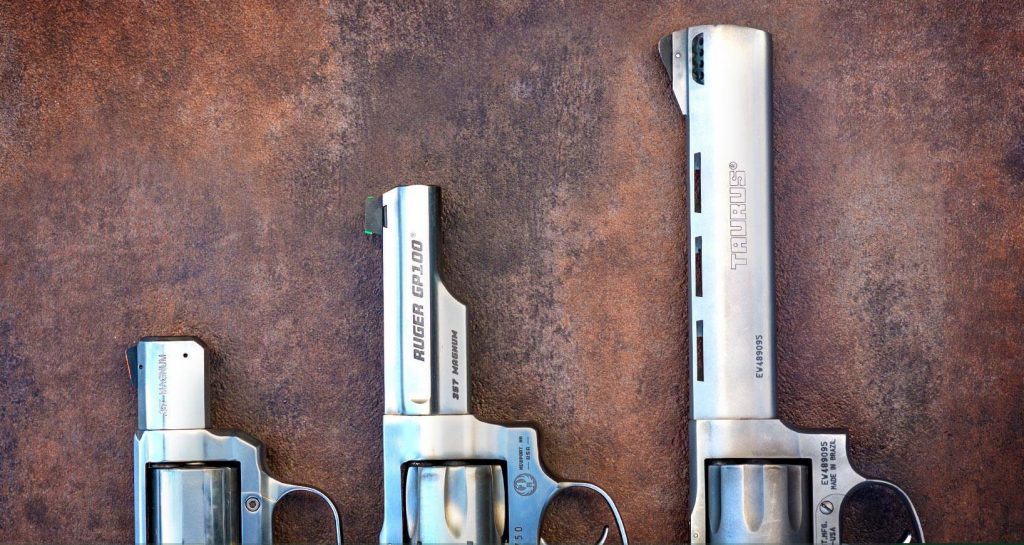
The cylinder, being the widest part of a revolver, is usually the hardest part of the gun to hide and this dimension usually is independent of barrel length. A four-inch revolver’s cylinder width is, by and large, the same width as that of a similar-caliber two-inch gun’s cylinder. Most folks I know who carry a four-inch revolver carry it outside the waistband under a coat or garment. Inside the waistband carry is a little more difficult because of the cylinder width coupled with barrel length but it can be done. If you carry a larger revolver, great – I’m glad that it works for you.
However, for our purposes here I will limit the discussion to those guns that are commonly referred to as snub-nosed revolvers. These are guns with a two- to three-inch barrel, give or take a little, and a total width across the cylinder of around 1.4 inches or less. That takes in many guns and models, but we will try to narrow it down to ten specific guns. Another point I need to mention: unlike my comparisons of semiauto pistols, I won’t be listing a specification table of length, width, capacity, etc. for each gun. I will mention important facts about the guns but when we look at the overall classification of revolvers known as snub nose (or snubbies), dimensions tend to be pretty close. I will point out the differences, to be sure.
Cylinder Width Vs. Semiauto Width
We’ve settled on a cylinder width of around 1.4 inches as part of our definition of a carry revolver. But is there anything special about that number, when several very popular semiautos are the same width, thereabouts? What makes the snubby harder to conceal when both are close to the same width?
There is a reason that the revolver might be a little harder to conceal even if it is the same width as a semiauto. The revolver is only that wide at the cylinder…the rest of the gun is flat. This can make the gun print easier, especially in a thin pocket holster. Some people will see the cylinder’s bulge and immediately “make” you as carrying a gun, because that’s what guns look like, right? Those same people might see a flat bulge in your pocket and not think a thing about it and not recognize it as a semiauto hidden there in a pocket holster. The reason is that the semiauto is pretty much the same width all over, much like a cell phone. That is the difference between the two.
From my personal experience, when I carry my Smith & Wesson Model 638 J-frame snubby, I get the “cylinder bulge” that I have to hide. When I carry a Ruger LCP-Max in its pocket holster, it looks like I have a large cell phone there. Only you can make the decision whether to carry a revolver or not – everyone’s different. One way that works for some people to carry a wheel gun is to put it in a shoulder holster. If you are wearing a jacket or other cover garment, the shoulder holster may be a viable way to have your gun with you, because the cylinder “bulge” won’t show.
Capacity and Reloading
Most compact or subcompact pistols hold anywhere from six to fifteen or more rounds in a magazine. To reload, you hit the magazine release button, the empty magazine falls free and you stick a fresh, full magazine in the gun and release the slide. You now have that many rounds at the ready again.
The revolver is a bit different in the capacity and reloading department. Unless you are carrying a larger seven- or eight-shot revolver, most of the smaller, easily-concealed carry guns will hold five or six rounds in the cylinder. Once you’ve fired all of them, you press the cylinder release button, swing the cylinder out, punch out the empty cases and refill the chambers.
There are speed loaders and speed strips that do help charge all chambers simultaneously or two at a time, but (unless you’ve really dedicated a lot of training time to the task of reloading) it’s not going to be as fast as slapping in a fresh magazine. Please understand – I’m talking about the average Mr. or Ms. Concealed Carrier, not a competition shooter like Jerry Miculek. He can reload his wheel gun faster than most of us can reload our semiauto. For the majority of us, a semiauto is going to be faster to reload.
BONUS OFFER: Get your free shooting range targets to print at home!
Get your free targets to print at home!
Let’s Balance It Out
OK…so we know that the revolver might be a little harder to conceal and maybe a touch slower to reload. Does it have any advantages?
It sure does. Put yourself in this imaginary scenario: you are waiting in line at the bank when an obviously deranged shooter comes in and starts firing wildly at people. You put your hand on your snubby in your jacket pocket just as he turns toward you. No time to draw! With a revolver, you end the threat by shooting through your jacket pocket without ever pulling the gun out (learn more about concealed carry insurance). You just saved your own and probably several others’ lives.
This is a bit far-fetched but there have been occasions when a legally armed concealed carrier has had to shoot through a jacket, coat, purse, etc. A revolver can do that, especially those with an internal or shrouded hammer. You might get one shot off with a semiauto but chances are the slide will get hung up in recoil in your pocket/purse etc., rendering it useless if more than one shot is needed.
Another advantage that is not readily obvious is that the manual of arms tends to a little less complicated for the revolver. I have discovered it is a bit easier to introduce a shooter to the sport when I use one of my revolvers with reduced loads, or a .22. When I’ve handed them a semiauto first, some of them all but handed it back saying that it looked too complicated. Don’t get me wrong – anyone can be taught to shoot anything, given enough range time and training. I make no judgment calls because of this – I own and shoot many semiauto pistols – this is simply what I have observed in my limited experience.
One Caveat
Here’s where a longer-barreled revolver comes in handy because there is one caution about handing a snub nose revolver to a new shooter. Until a shooter attains a certain level of proficiency, a snubby is a very difficult gun to master.
The snub nose should be introduced to the new shooter only after he/she is familiar with the trigger, sight picture, and recoil generated by the longer-barreled gun. Once those are mastered, then hand him/her the snubby with standard- or target-pressure loads and let them shoot, shoot, shoot. Gradually they will work up to defense-level ammo. I specifically avoid any type of .357-level loads, even if the gun is made for them. As much as I have shot revolvers over the years (including a lot of full-bore .44 Magnum handloads), I hesitate to shoot .357 Magnum loads through a two or two-and-a-half inch-barreled snubby.
I’ve heard the sensation created by recoil is equated to getting one’s palm whacked with a 2X4. I concur. So, keep the loads on the low side and you’ll have a shooter for life. Stick with .38 Special loads for practice and +P loads for self-defense. Here’s where handloading is advantageous – you can tailor the load to the gun for practice, but only carry factory loads. The take-away for this is to not turn off a new shooter but to encourage them by them getting hits on targets and having fun. Later, they can venture into .357 territory if they desire to do so.
.357 Magnum In A Two-Inch Revolver?
To have the power of the .357 Magnum cartridge at your disposal in a gun that you could just about carry in your pocket is tempting. Be advised, however, that shooting full-bore .357 loads in a 23-ounce snubby is not a fun experience unless you’re the type of person who enjoys having the palm of your hand whacked with a baseball bat.
Most snubby .357 guns are carried with .38 Special +P ammo. Is it worth carrying .357 Magnums in a two-inch-barreled gun that can’t take advantage of magnum ballistics in such a short barrel?
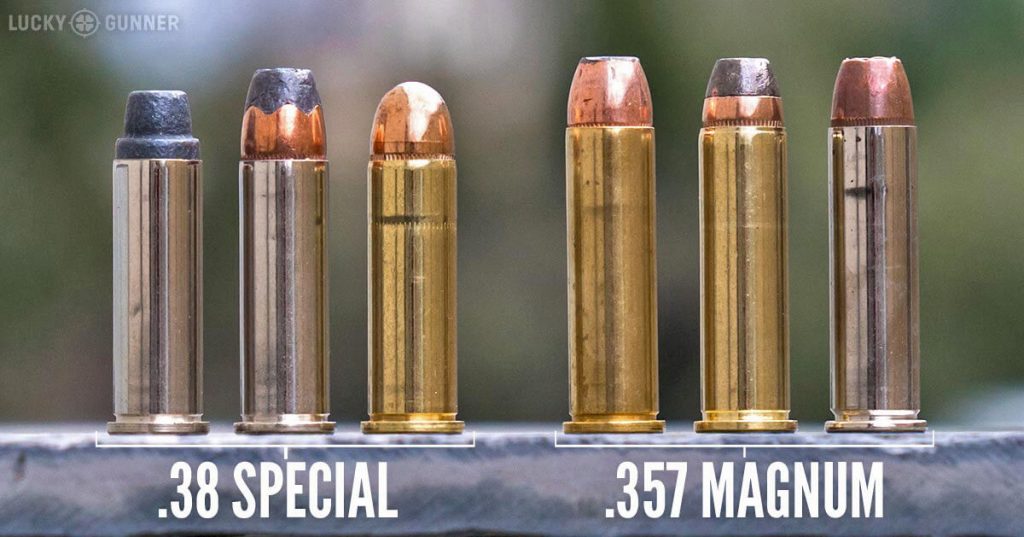
It can be, but don’t be under the assumption that, just because it says “.357 Magnum” on the box of ammo, you are getting ballistics similar to those gotten from a longer barrel. Obviously, it’s not going to be the velocity you’d get if you shot the .357s out of a six-inch-barreled gun, but even a 100 fps gain is worthwhile. A lot of folks who carry short-barreled .357s practice with .38 Special ammo and save the palm-whacker .357 ammo for carry. That won’t happen, but you should notice some gain. There are .357 loads for short barrels – check those out.
One practice method has the shooter at the range with both types of ammo. The majority of the rounds fired are lower-pressure Special ammo, with a cylinder or two of magnum loads touched off at the end of the session to know where they will print on the target and to acclimate yourself to the recoil. As long as you practice with your carry load at regular intervals (only you can decide what constitutes “regular”), you should be OK. Here’s a video I found that explains really well the difference between .357 vs. .38 Spl. velocities in a snub-nosed gun.
Popular Articles
Fire It Single or Double Action?
This topic arises with any snub nose revolver that has an exposed hammer spur and is capable of single action fire. Do you thumb-cock the hammer and fire the gun in single action mode or just pull the trigger and shoot it double action-style?
One of the snubbies I own is a laser-equipped S&W Model 638, which is a 1.87-inch-barreled, 5-shot .38 Special with a shroud that covers all but the tip of the hammer spur so I can cock the hammer for a light single action shot if needed. Some think this gun to be the best of both worlds because you can fire it two ways. You can draw the gun without fear that the hammer spur will snag on something, because the hammer is mostly covered. Double action shooting involves just pulling the trigger, and this is the method most trainers prefer. Or you can fire it as described above by thumbing the hammer spur back to cock it and then fire it single action with its attendant lighter trigger pull.
As just mentioned, most trainers who teach folks to use revolvers for defense will only allow them to shoot double action with no manually cocking of the hammer. This has been accepted practice for decades due to the rapidity with which the shooter can get the gun into action and score hits on the target by not having to pause to manually cock the hammer. In this style, one is trained to push the gun through to the target, quickly line the sights upon the target, and then pull the trigger smoothly to fire the gun.
Shooting At A Distance
The one question that inevitably arises involves shooting at a distance… what if you would have to take an aimed shot at a target more than a few feet away?
Here is where a short, light single-action trigger pull is desirable. Unless you are trained to fire double action only, this is achieved by cocking the hammer manually to allow for that lighter, smoother pull. Chances are this is not going to happen, but some folks like to be prepared for almost any eventuality.
Anyway, the best-selling snubby from S&W is the Model 642. This one has its hammer enclosed inside the frame and can only be fired double-action by pulling the trigger. This tells us that most buyers of these guns don’t want the ability to manually cock the hammer. Some tend to “stage” the trigger pull by pulling it partially back until they feel a certain resistance. Then they hold the trigger as they do a final sight alignment and only then pull it the rest of the way. This would only happen if they had time for a deliberate, aimed shot. So, there is more than one way to “cock” a double-action snubby. Either by manually pulling the hammer back or by staging the trigger pull.
The Guns
OK…we’ve had enough theory and background. Now let’s look at guns. I will do this a bit differently than I have done in the past. I will list manufacturers and then look at specific guns made by them that fit our criteria.
We will look at guns from (in alphabetical order) Charter Arms, Colt, Kimber, Ruger, Smith & Wesson, and Taurus. All of these manufacturers make guns that are made to carry concealed. Here are the guns we will examine:
| Charter Arms | Undercover/Bulldog |
| Colt | Cobra |
| Kimber | K6S |
| Rock Island Armory | M206 |
| Ruger | LCR/LCRx & SP101 |
| Smith & Wesson | M&P Bodyguard .38 & 638/642 J-Frame Revolvers |
| Taurus | Model 856 |
The Kimber and the Ruger SP101 are chambered in .357 Magnum but are equally at home shooting .38 Specials, which are easier on both the gun and the shooting hand. Below are some of the more popular concealed carry revolvers. Any of them would suffice in a self-protection role. We’ll look at the companies listed above and then see what they have to offer.
Charter Arms Undercover and Bulldog
The Charter Arms company has been through some changes over the years. Some better than others, but now they are on solid footing and are putting out very decent guns at affordable prices. I have had experience with both of the revolvers mentioned here so I can recommend them without hesitation. Let’s look at two of the most popular snub-nosed revolvers they sell.
The Undercover
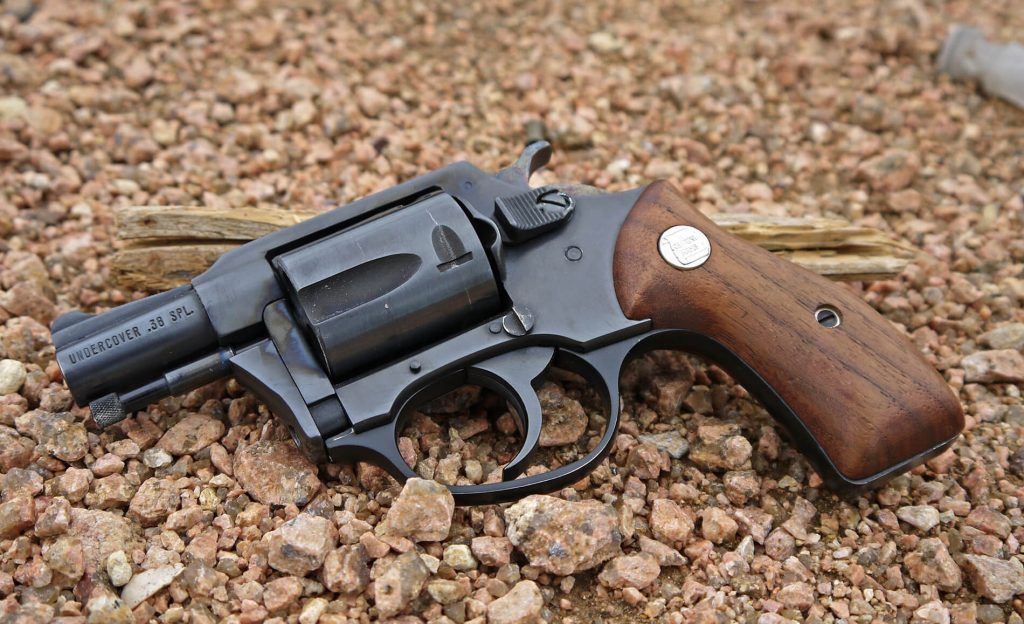
This gun, chambered in .38 Special, is probably the best-selling gun Charter Arms makes. It was their first product, introduced in 1964. The gun’s design was novel – it used no frame side plate, which in theory made it stronger. Produced in several calibers, the .38 is its most popular chambering. The gun uses the fairly standard two-inch barrel and comes in different finishes.
Most usually attired in rubber Hogue-type finger-groove grips, the Undercover can be had with or without a hammer spur, in stainless, in blue, in nitride…the choices are many. At last count, the Charter Arms website showed no fewer than 58 models in the Undercover line, ranging in price (MSRP) from $362. You can get one with Old Glory emblazoned on it, or one with Crimson trace grips if desired. What this all boils down to is that, for a real-world price of a little over $300, you can have a dependable carry .38. You can’t ask for much more than that.
The Bulldog
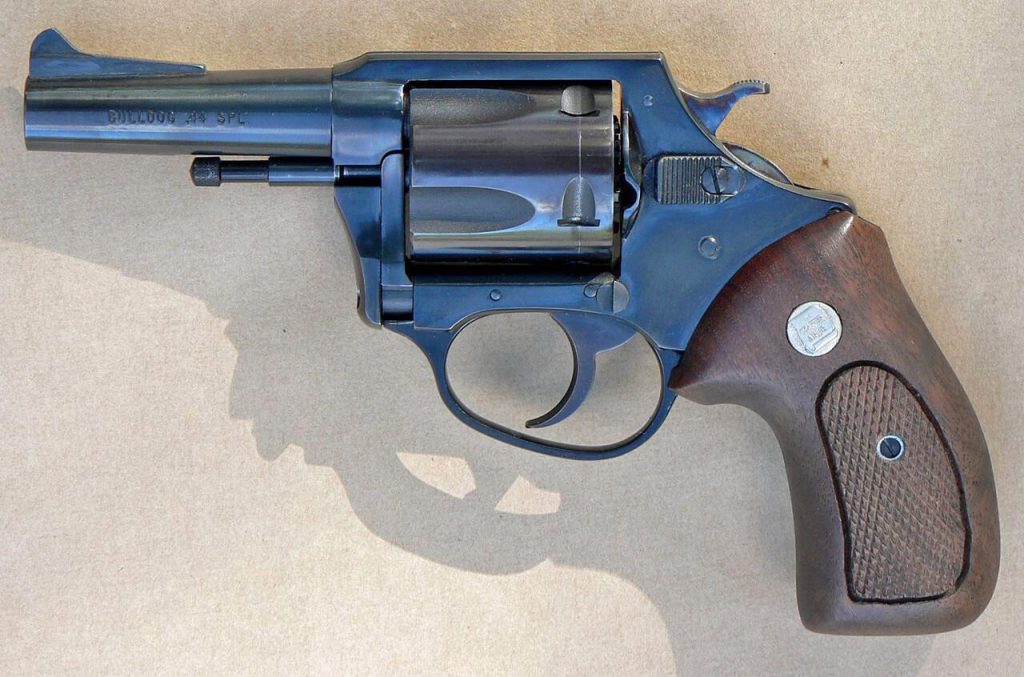
Now we’re talking – a .44 Special, 5-shot snubby. I owned one of these back in the 1970s. The gun itself made headlines across the country in 1976-1977 when David Berkowitz, a.k.a. the Son of Sam, killed eight people in New York with one chambered in .44 Special.
At that time, I just happened to own the same model Bulldog that I carried a lot. It went with me when I rode my motorcycle, hidden on my belt and out of the way. The gun was eminently concealable. Charter Arms still makes that 1970s blued version with the unshrouded ejector rod and wooden grips but I believe they sell more of the stainless models with the full-length ejector rod shroud and rubber grips. There are eleven models of .44 Bulldogs on Charter’s website, ranging in price from $409 to $1595 for a commemorative Heller edition. You can get one with factory Crimson Trace grips for the MSRP of $690. However, most of the mainline blue or stainless Bulldogs tend to sell for around $400 at your local shop, give or take a little.
I shot the heck out of mine with my .44 Special reloads, and would not hesitate for a minute to carry one again. Their 2.5″ barrels are plenty long enough to give that big .44 bullet a good push, but if you want more, get the four-inch target version with adjustable rear sight for $475 (MSRP). That would make a great woods-walkin’ gun, for sure! I loaded some plastic snake shot containers from Speer with #9 shot for mine; with a couple of those and three hard-hitting cast flat-nose bullets, you are ready for about anything in the woods. Check these guns out – you might like the idea of a .44-caliber carry gun. There is an abundance of modern .44 Special defense loads out now to accompany your Bulldog.
Colt
Colt has recently gotten back into the double-action revolver game with its re-introduction of the Cobra, a six-shot .38 Special. Made from 1950 – 1981, the Cobra was based on the famous Detective Special snubby Colt first made in 1927.
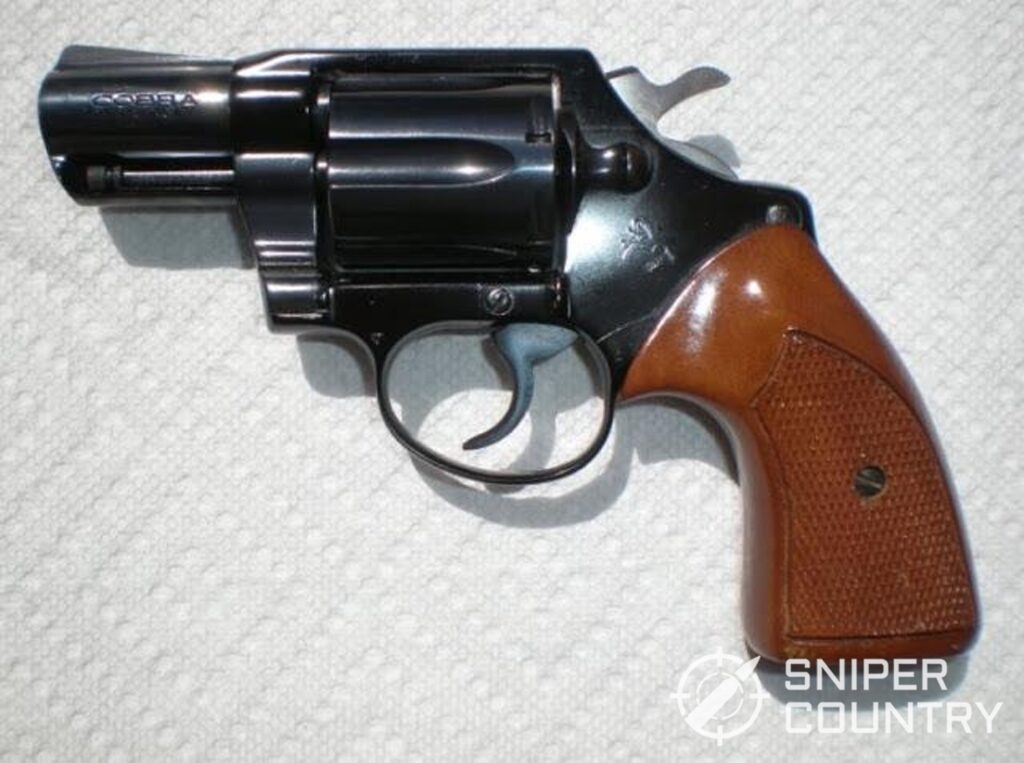
The Detective Special was made with a steel frame and eventually led to the Cobra (above). They created the Cobra with an aluminum lightweight frame. This was given a facelift in 1971, when a fully-shrouded ejector rod, a ramped front sight, and very nice wood target-style grips were added. Wishes wishes…I wish I had mine back. I had one of these aluminum-framed snazzy-looking snubbys and for some unknown reason traded it. They were the Cadillac of snub-nosed revolvers at that time. It was one handsome gun, if such a thing could exist. Sleek, with that continual radiused sweep at the muzzle and a blue finish you could just about use to see to comb your hair in — it was one heck of a gun. The new one is no exception.
The New Cobra
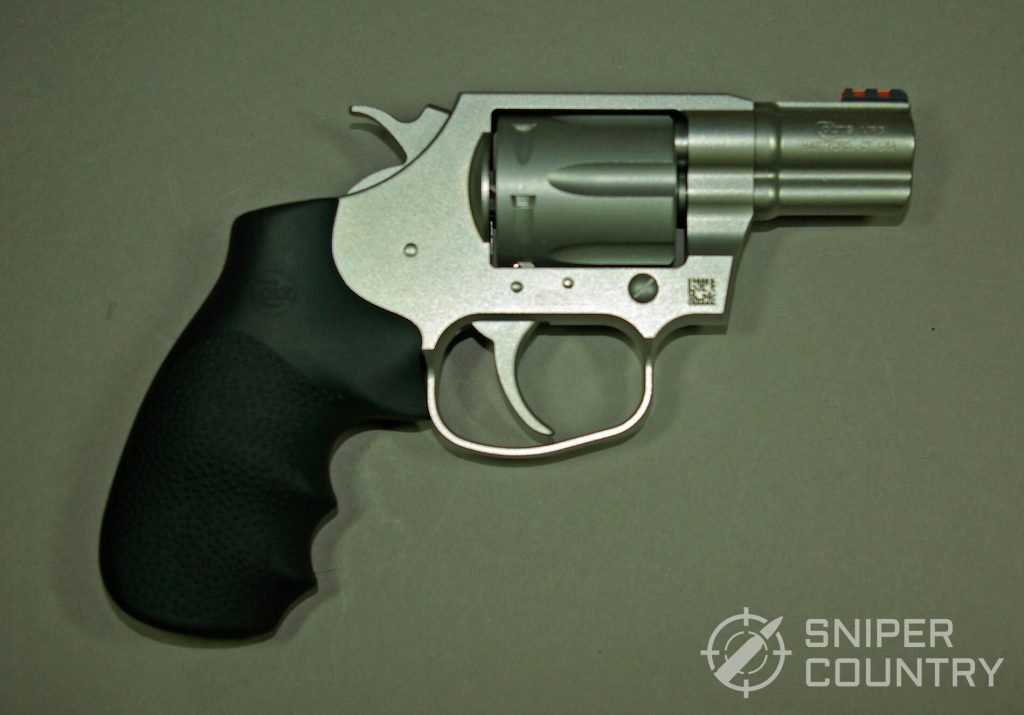
The new Cobra is, like its predecessor, a six-shot snubby with a two-inch barrel. Unlike the earlier Cobra, the new one is built from stainless steel, not aluminum. Colt uses a leaf spring instead of the coiled spring that Smith and Wesson (and others) uses. The LL2 (linear leaf) spring produces a double-action trigger pull of around 7-9 pounds. It also has a single-action weight of 3-4 pounds without stacking.
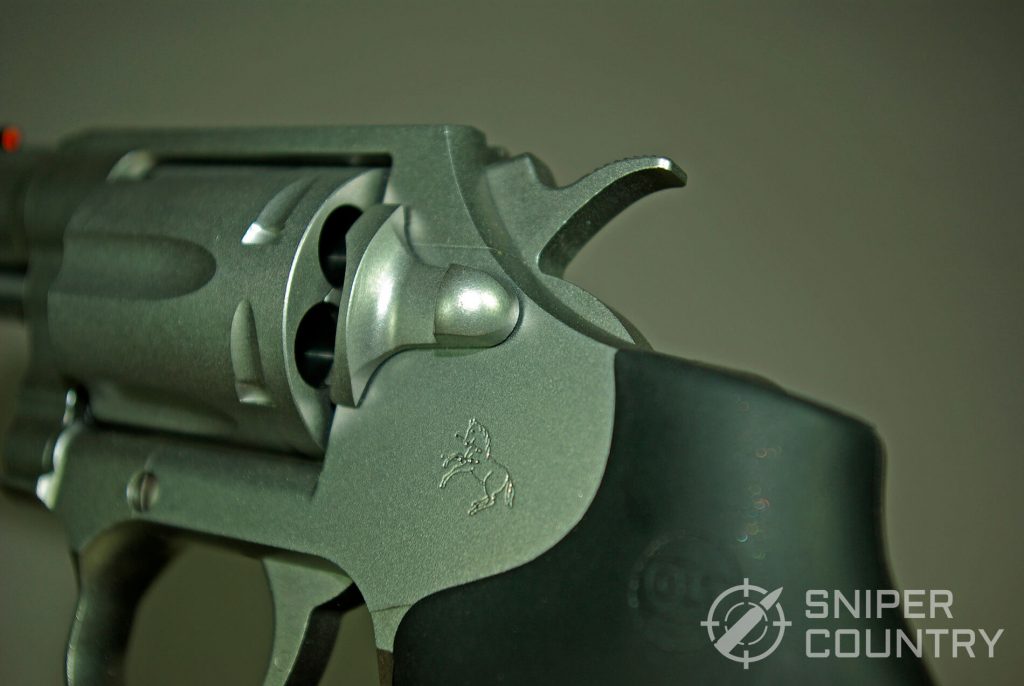
That alone helps in the accuracy department because you don’t have to “fight” the trigger, pulling the sights off target. Wearing a red fiber optic front sight and a deep muzzle crown, this new Cobra is a shooter. It weighs in at 25 ounces, which really helps soak up the recoil of the +P loads it is rated to shoot. Equipped with Colt-branded Hogue overmolded rubber grips with finger grooves, whatever recoil that is generated is soaked up pretty well.
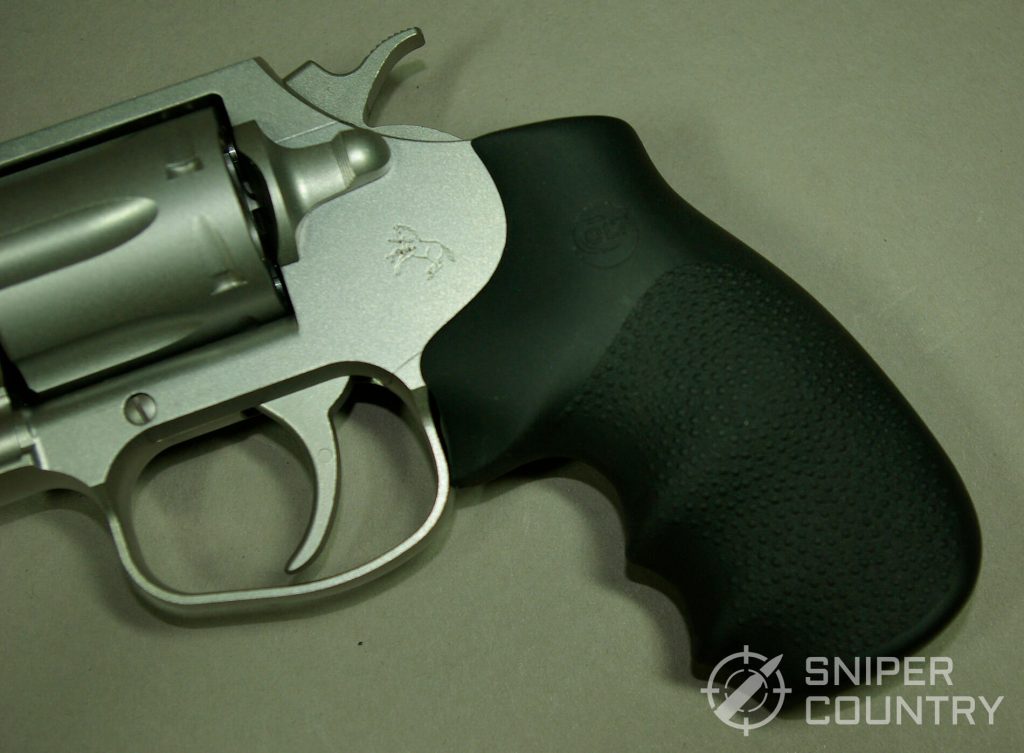
Another feature that helps keep the Cobra from firing unless the trigger is pulled is the transfer bar. The hammer doesn’t have a firing pin on its face. Instead, the hammer face is flat and it strikes another flat piece of metal that rises up when the trigger is pulled to transfer the hammer’s force to frame-mounted firing pin.
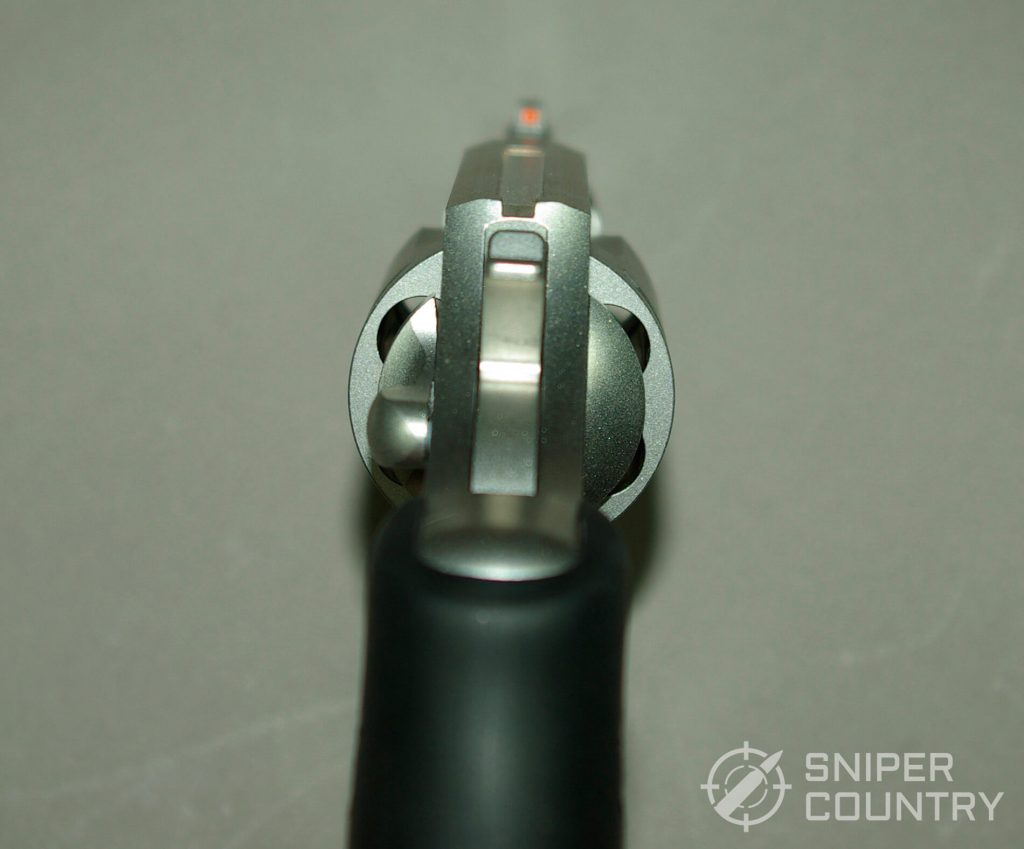
There is no way the hammer can touch the firing pin without the intermediary transfer “flag” in position. This lets the shooter take advantage of loading all six chambers and carrying the gun with confidence that it will remain safe until the trigger is pulled.
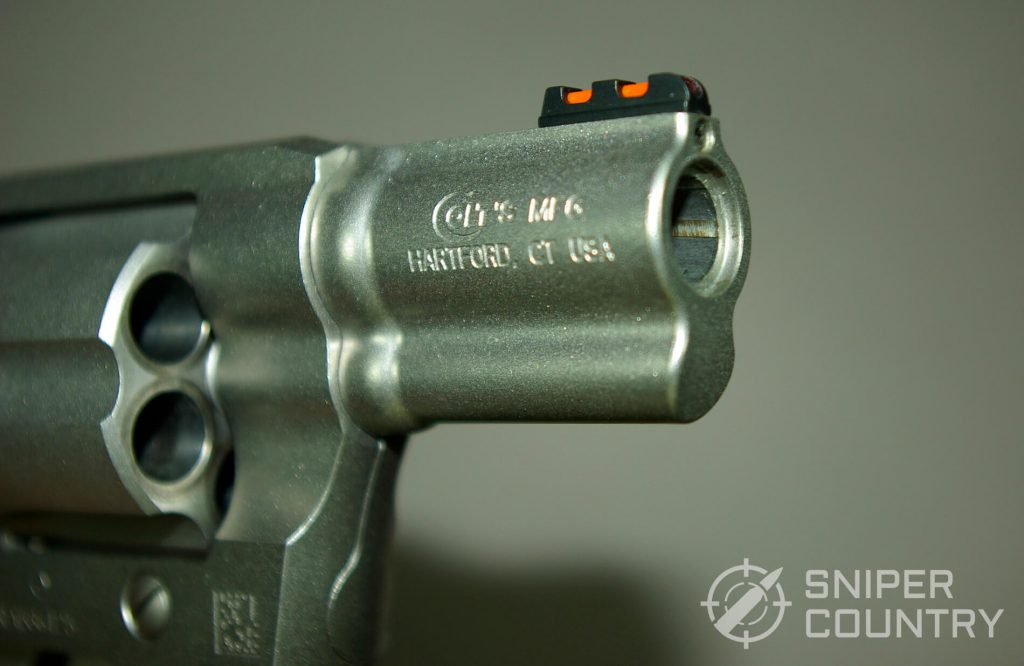
Carrying 17 percent more ammo than a five-shot revolver has its advantages, to be sure. Very few snub nose revolvers are six-shooters since most of them have a capacity of five.
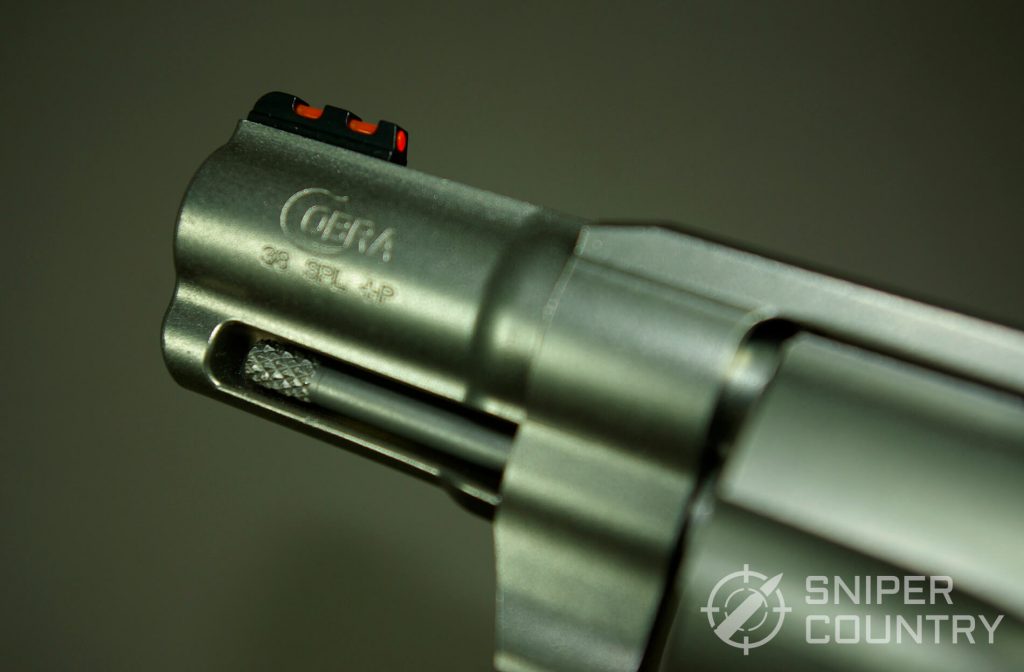
The MSRP of the new Cobra is $699 but I’ve seen them online around $675. That’s not a huge discount but two factors tend to keep the real-world price a little higher…first, it’s a real Colt. The name is associated with well over a century of firearms history and quality construction. The second factor is simply supply/demand. This is a newish model and it will take a while for production to satisfy demand. At any rate, I’m glad to see Colt back in the wheel gun business. Maybe it won’t end with just the Cobra. We can hope…
The Kimber K6S
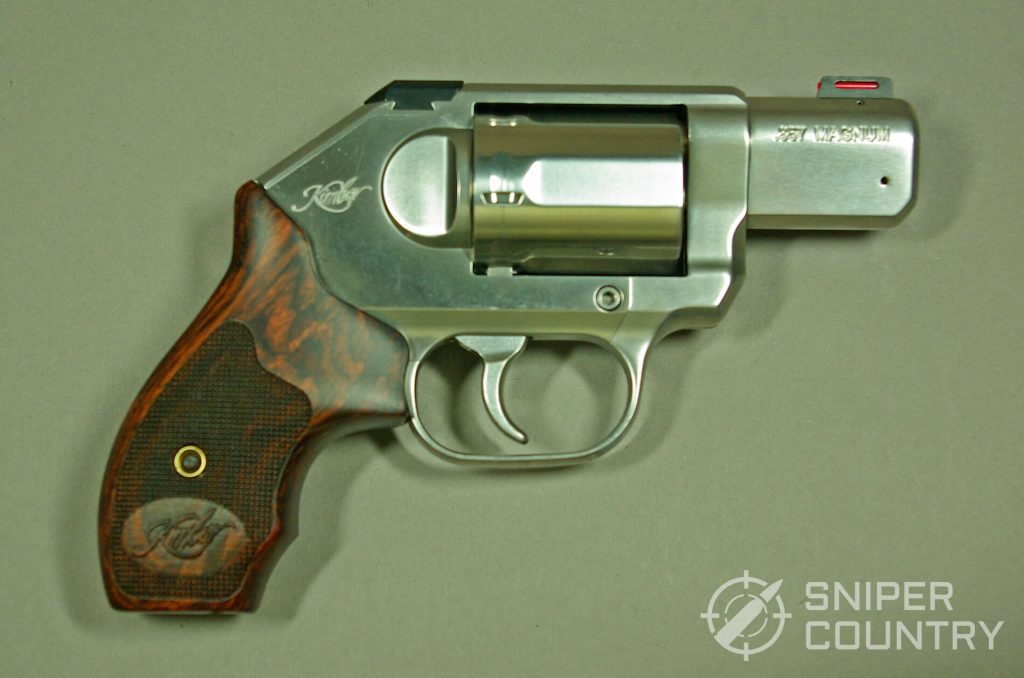
Kimber is a company known for making top-of-the-line 1911s and rifles. They fairly recently got into the revolver business with the introduction of a six-shot snub nosed .357 Magnum.
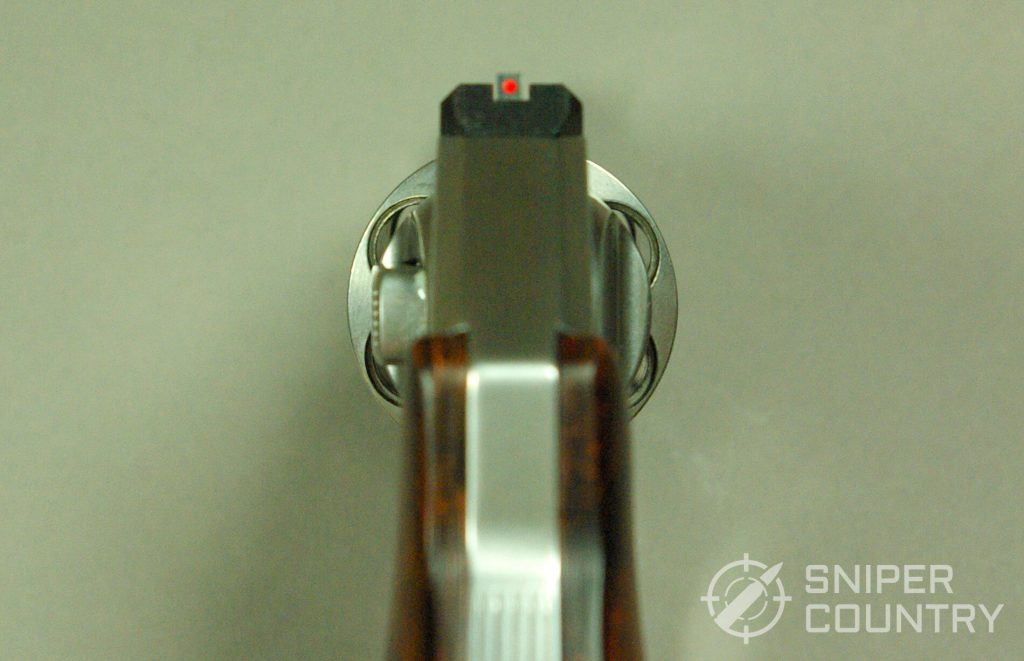
They now show several different snub nosed revolvers on their website ranging in price from around $899 to almost $1200. There is even a custom-engraved version for over $1400. If you are the type who wants the best regardless of cost, the Kimber might be for you. Expect a real-world price of around $700 for the brushed stainless K6S.
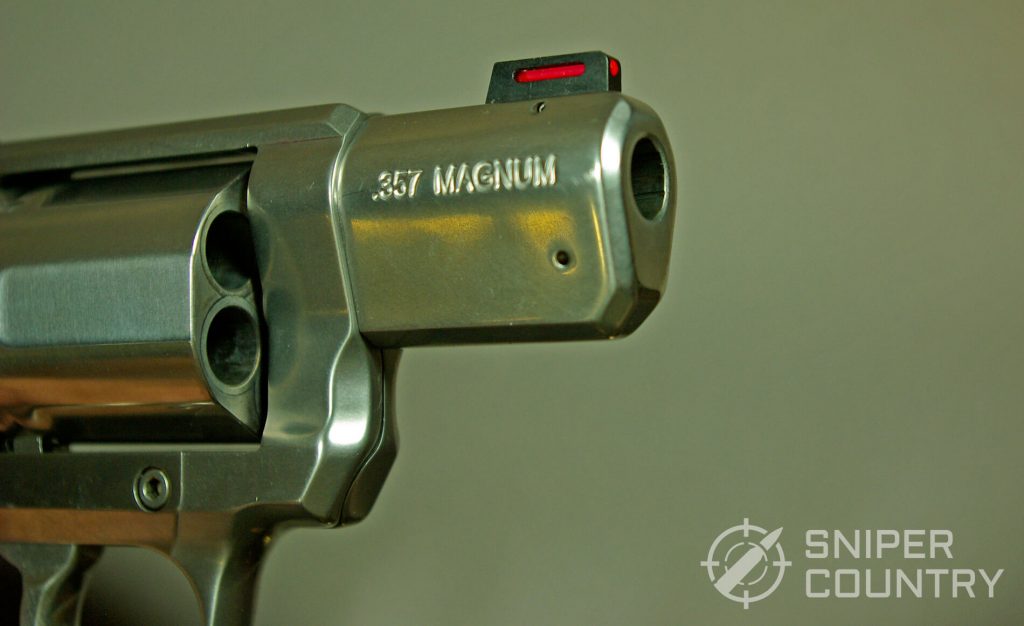
These are well-thought-out carry guns that are produced with one intention: to be the best short-barreled concealed carry .357 Magnum out there.
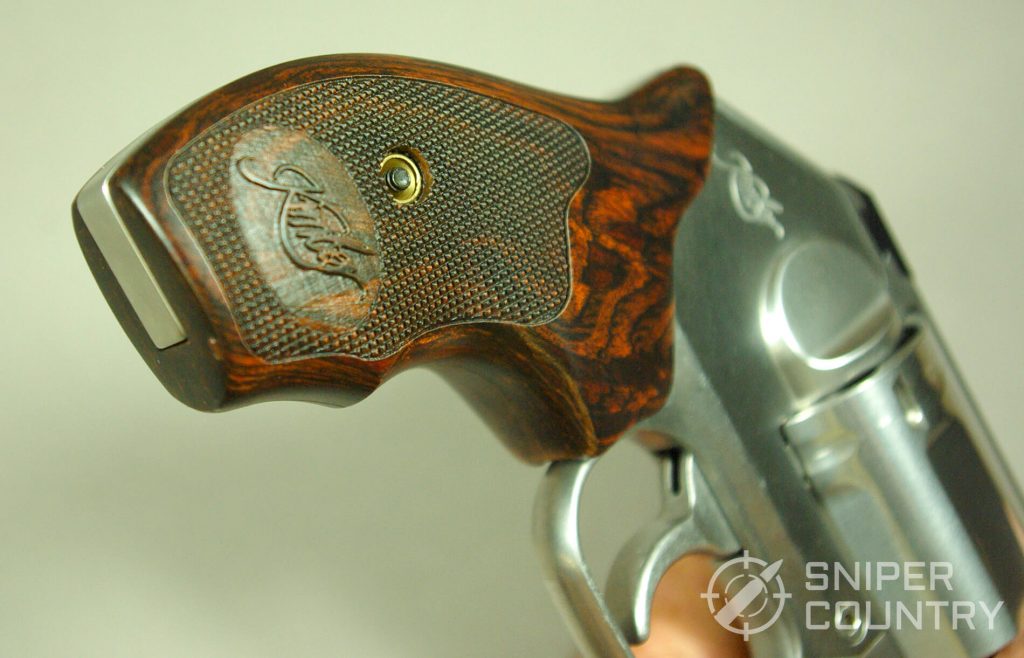
Options range from models with night sights, a blackened DLC or natural stainless finish, two- or three-inch barrels and fancy wood grips.
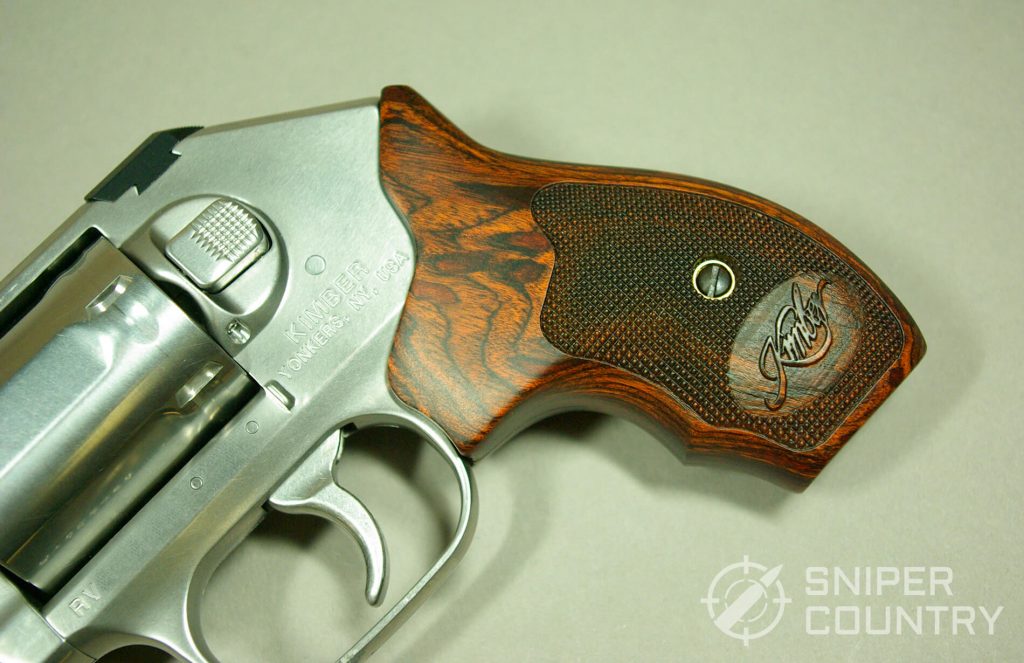
Also, the cylinder design is different than most…flats are cut across it. This helps keep the weight and the overall width down a bit.
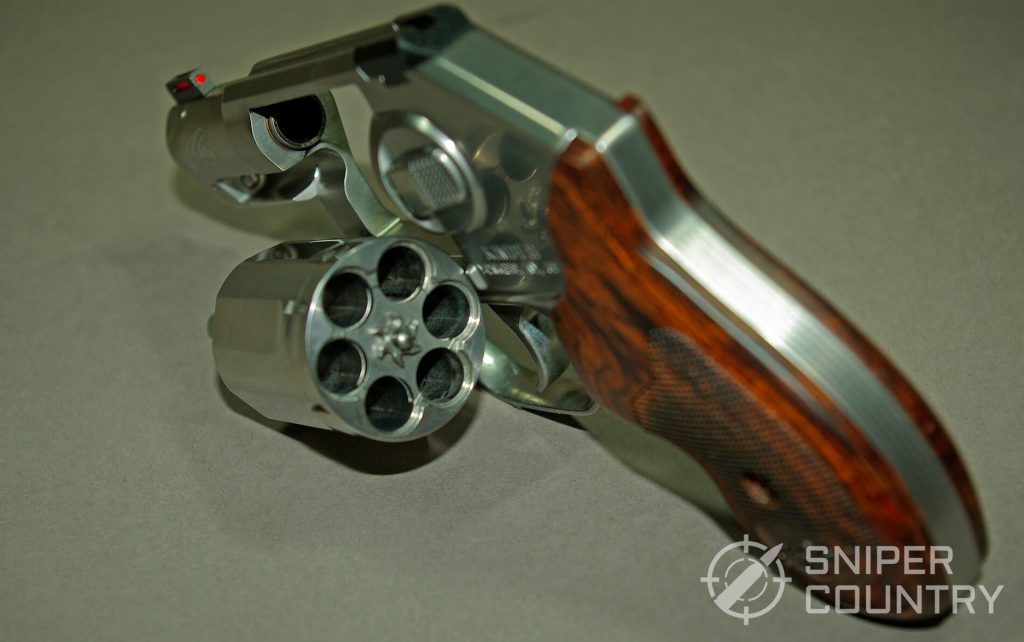
Speaking of weight, the K6S is the lightest small-frame .357 Magnum revolver going as of this writing. Six pedal-to-the-metal rounds of .357 ammo in a 23-ounce package has a certain appeal to a lot of shooters. Just be aware that the recoil will be fierce.
Rock Island Armory
M206
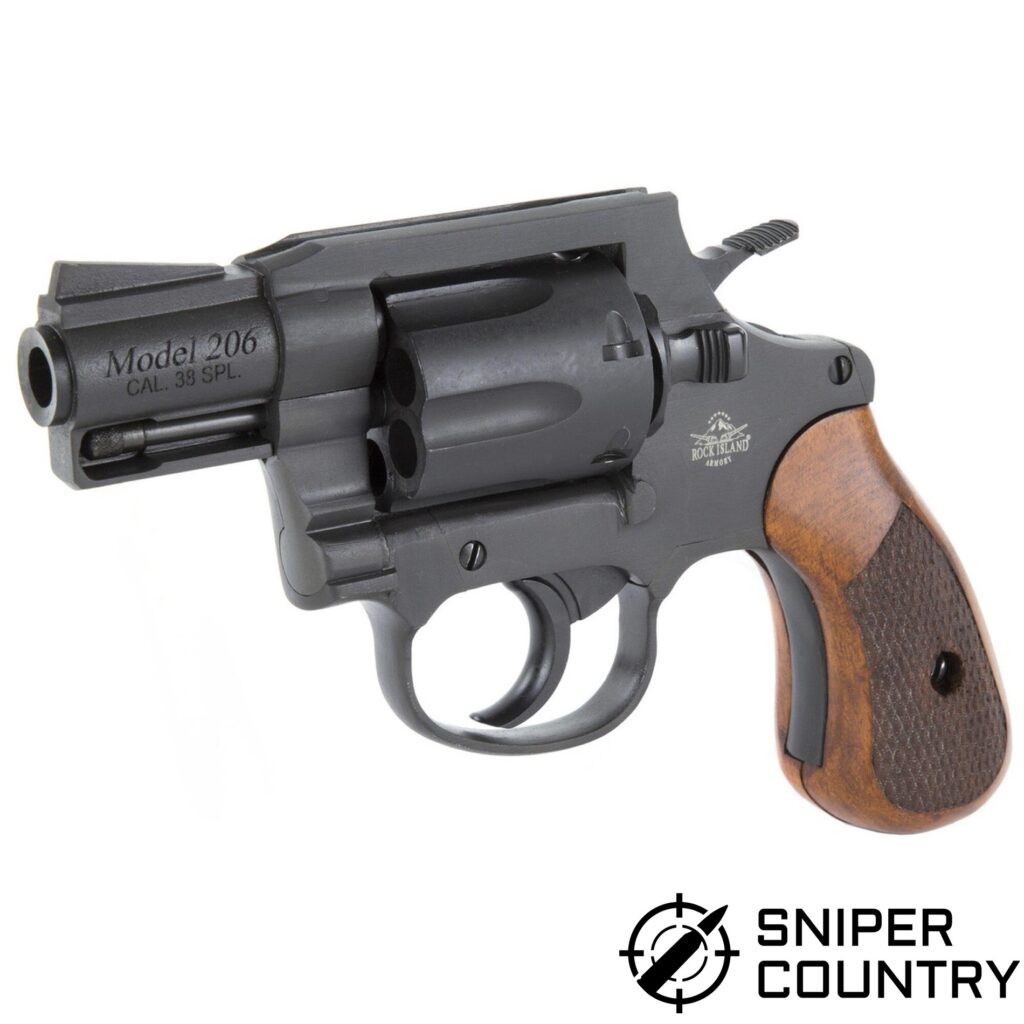
The M206 is a gun that hopefully just about anyone could afford. With a full-blown MSRP of only $283 (which would translate to a real-world price of around $200), this six-shooter could see service in a holster near you. I owned one of these once upon a time and it did just what it was supposed to. It put bullets in the target where you aimed it every time you pulled the trigger.
The finish, as the saying goes, ain’t nothin’ to write home about, but the gun works. Loosely based on older Colt snub-nosed revolvers (sort of a cross between the old versions of the Detective Special and the Cobra), this gun is really well-built for its price point. Utilizing a shroud for the ejector rod (which was something the Detective Special didn’t have — the lack of such a shroud was the cause for more than one ejector rod being bent when the owner of the gun used it as a sap), the typical Colt pull-to-the-rear cylinder release, a nicely-ramped front sight and a decent trigger, this gun looks like it ought to cost more.
Mine was accurate and held steady on target, which partially was due to its weight of 25 ounces. It also carries that important (to some shooters) 6th round. For those of us out there on a budget, here you go – this gun works. It is made by Rock Island Armory, one of the world’s largest makers of 1911 pistols. Their customer service is excellent…it’s a win-win. For about the price of a pellet gun, you can get a well-made .38 Spl. snubby that will give you years of service and that you wouldn’t feel bad sticking in your tackle box or truck for that quick trip to the lake. They have your back. Â
Ruger
We will look at two Ruger snub-nosed revolvers – the LCR/LCRx and the SP101.
The LCR/LCRx
By way of clarification, if I refer to the LCRx, that’s the model that has the exposed hammer spur that you can cock to fire in single action mode.
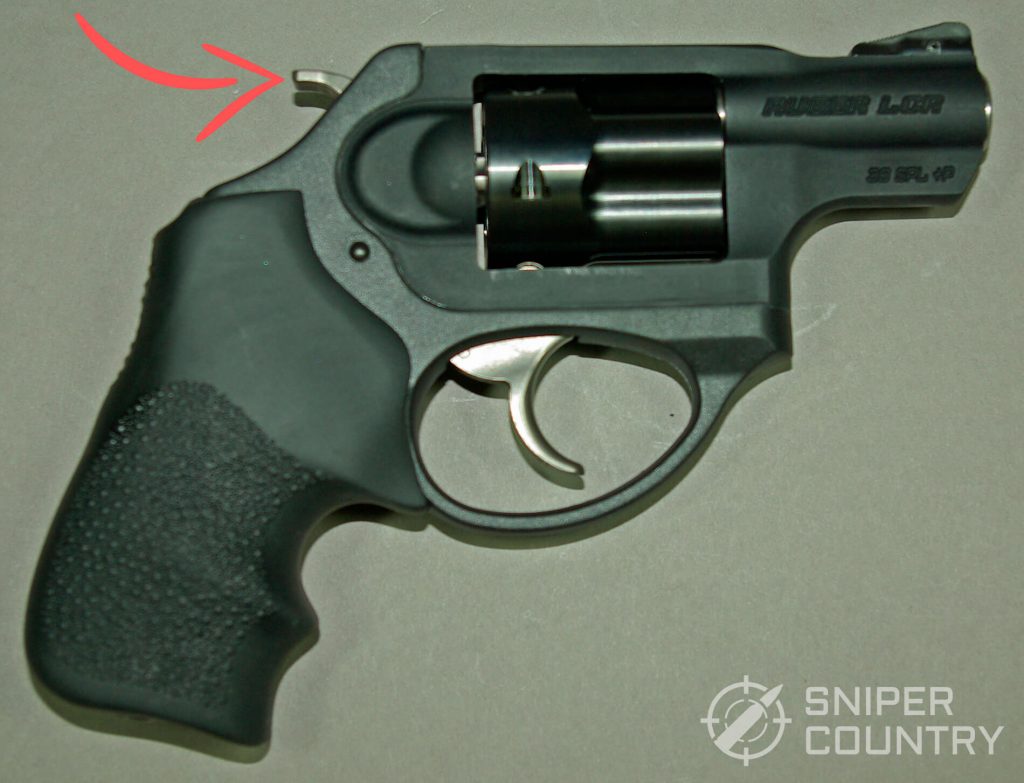
The LCR’s hammer is internal; this model fires double action only.
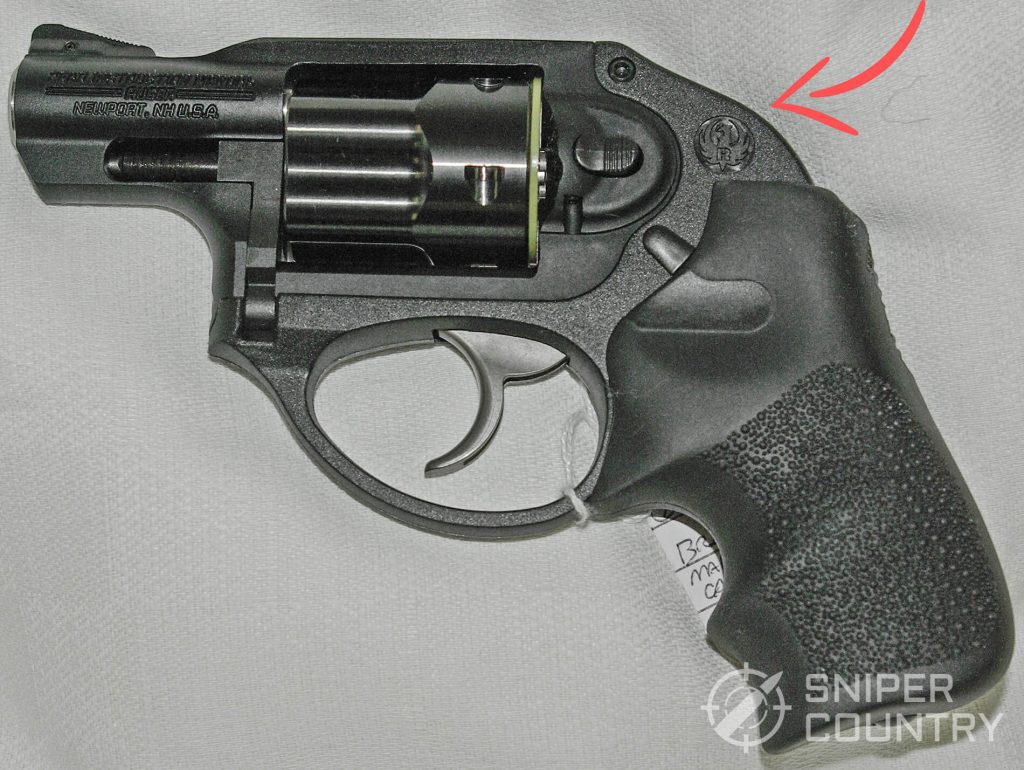
The guns are the same except for the difference in the frame required to accommodate an exposed hammer spur versus one that totally encloses the hammer.
Both guns use a polymer frame with stainless steel making up the important, stressed parts like the cylinder, barrel, etc.
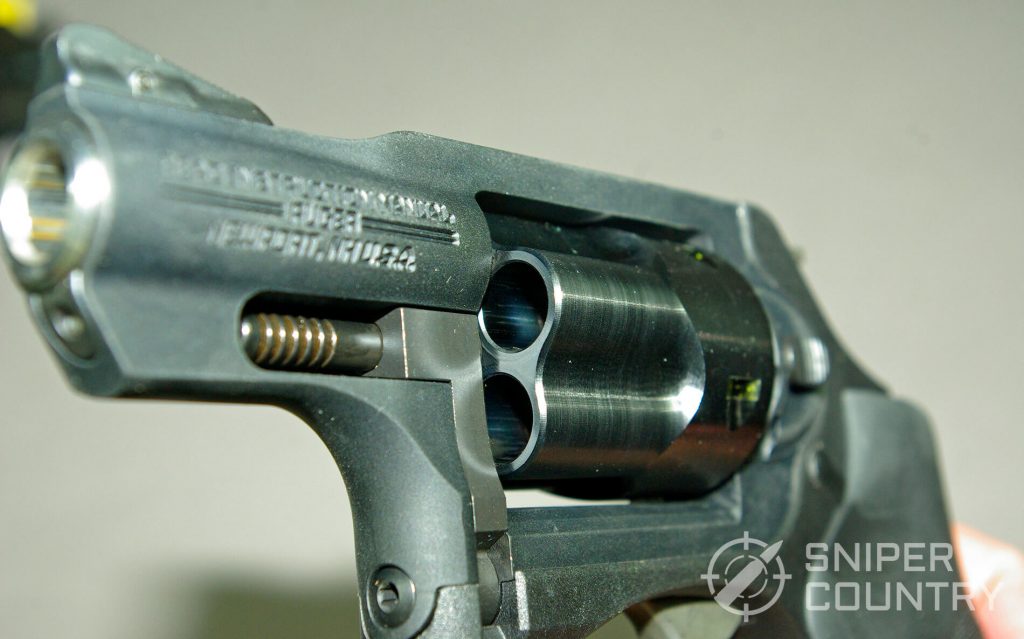
The use of polymer in snub nosed revolvers is still fairly limited. The only other manufacturer that makes a polymer-framed wheel gun is Taurus that I know about. Why a polymer-framed revolver? Because they can make the gun ridiculously lightweight and yet still have all the strength that they need.
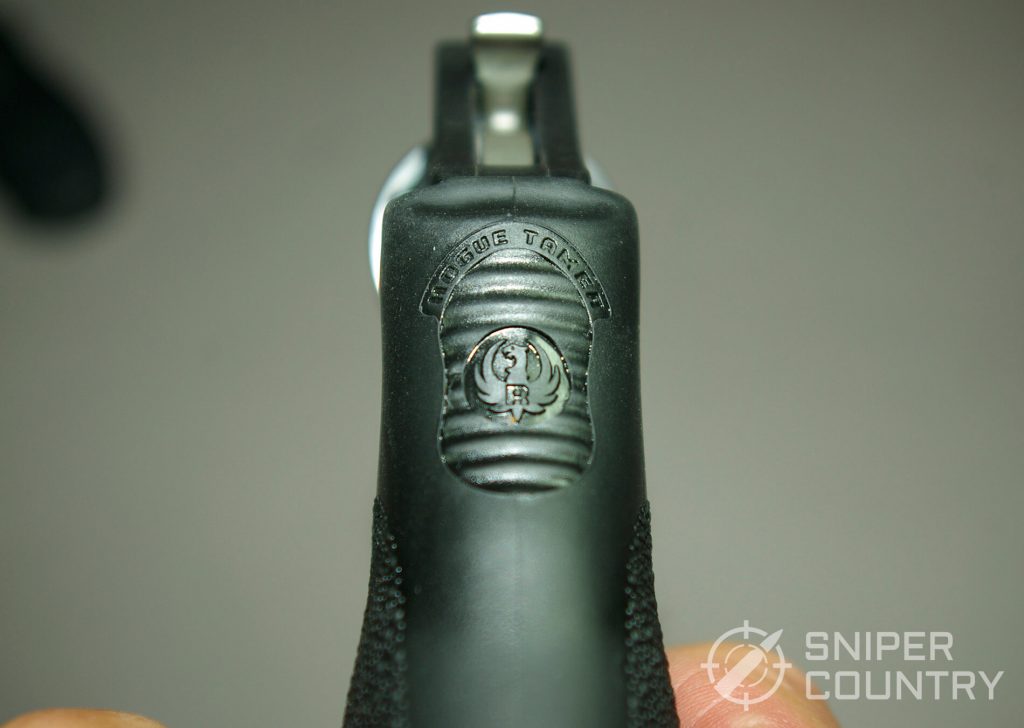
The LCR weighs in under 14 ounces, with its poly frame and drastically fluted cylinder. If you are a pocket carrier like me, you appreciate the light weight. The only time it works against you is when you fire the gun, especially with +P loads. But, if you can take the recoil, the LCR makes a great carry gun.
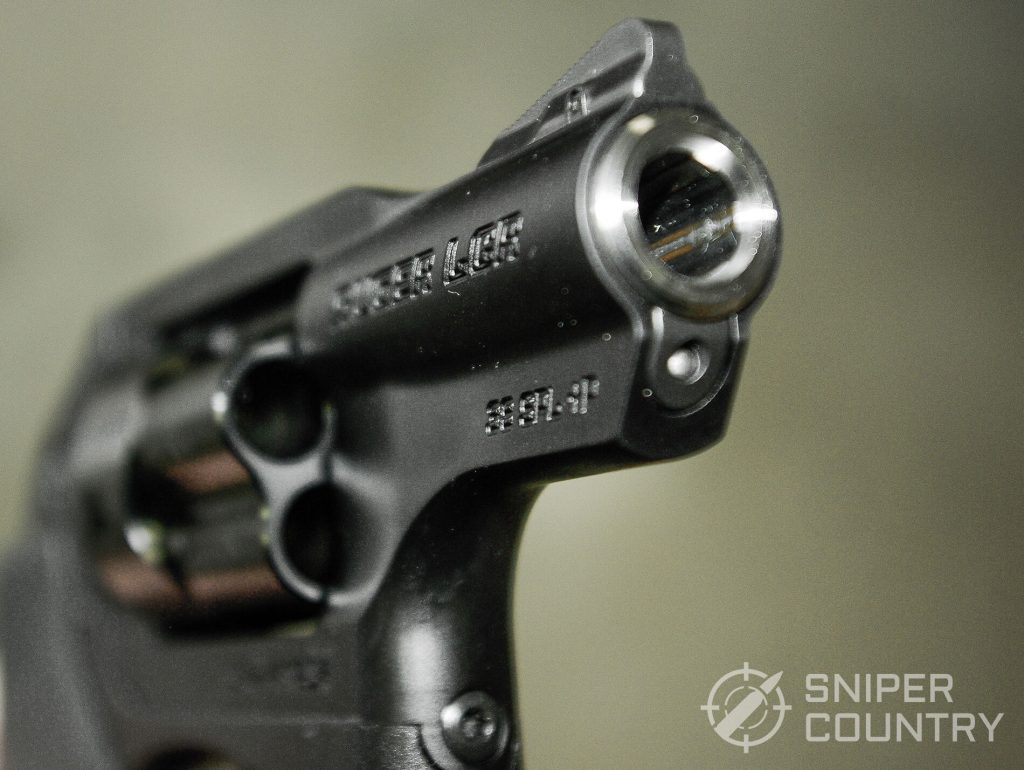
If you like the idea of the LCR but wish it came in .357, it does. It is constructed of stainless steel and polymer and weighs around 17 ounces. So, no matter which cartridge (.38 or .357) you wish to shoot in your lightweight LCR, Ruger has you covered. Expect to find the LCR for around $430-$450 at your local gun shop.
The SP101
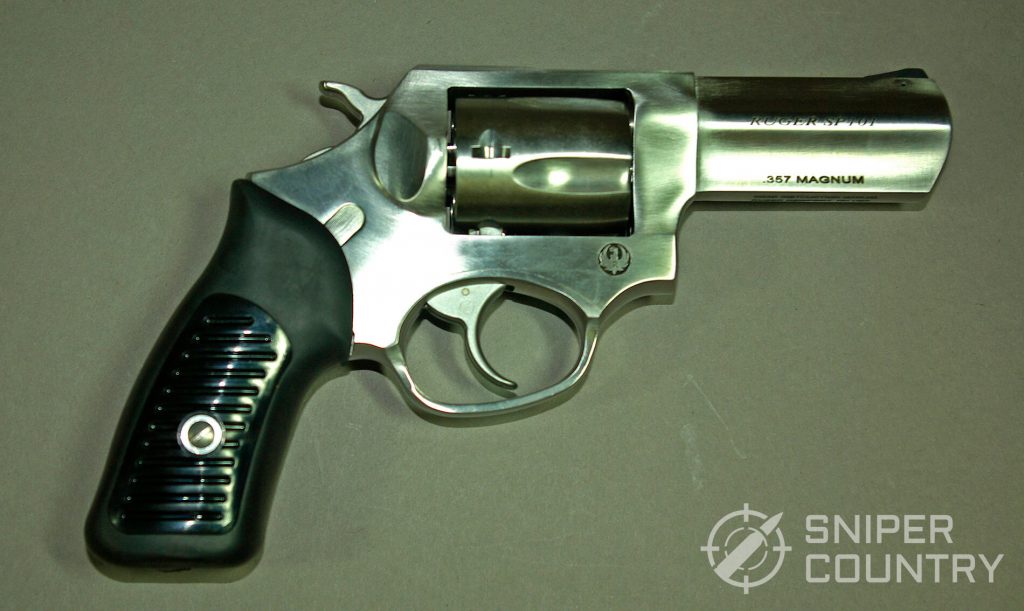
The SP101 is Ruger’s mini-tank disguised as a revolver. This thing is tough. When you buy an SP101 you get one of the grandsons of the original Security Six .357 introduced in 1972. (The other grandson is the GP-100).
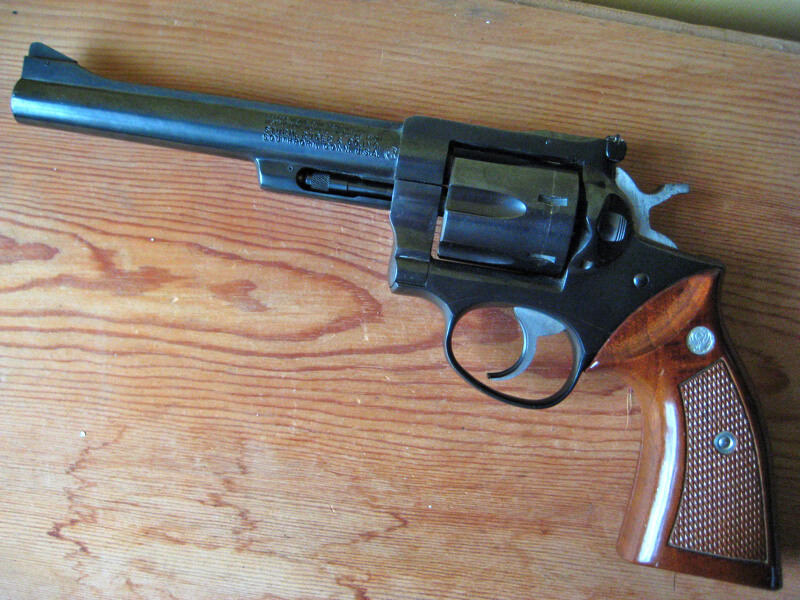
The Security Six was built to be carried by police, security guards or civilians. The gun was a no-nonsense stainless or blued .357 with a short barrel (usually either 2.5 or 4 inches although longer tubes were available). Having an adjustable rear sight, the gun was at home in a bullseye competition but had a different purpose: to defend whoever was carrying it from whatever was going down. Production halted in 1988.
The SP101, introduced in 1989 as a smaller-framed companion to the GP-100, is built a lot like the older model but with newer metals and construction methods. It did go from a six-shot cylinder to one that holds five rounds. Also, the snubby-length guns have fixed sights but other than that, the guns are pretty much alike except for the grips. The lesser-expensive SP101 utilizes a plastic grip in place of the wooden grips on the older gun. You can, however, get grips made out of fancy wood. Another option is the hybrid rubber-wood grip that Ruger makes.
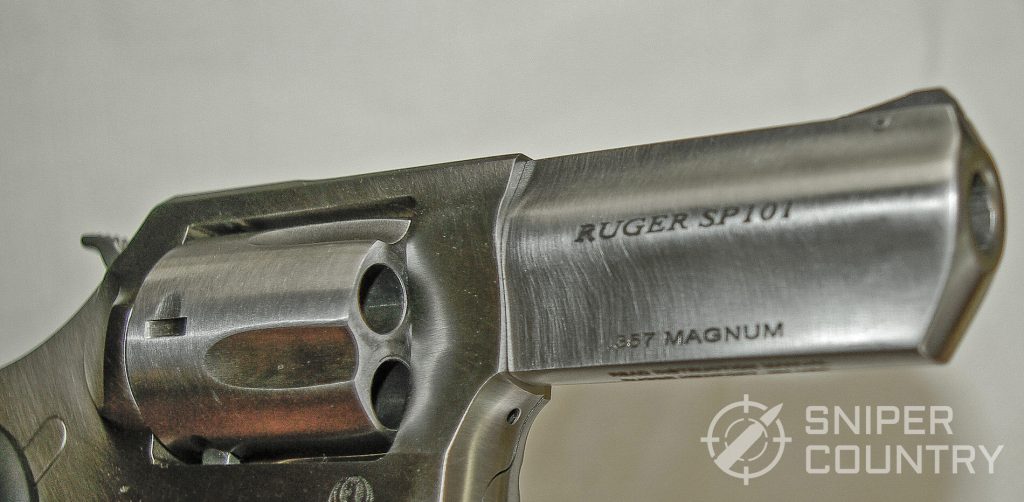
The SP101, as mentioned, is one tough hombre. Being chambered in .22LR, 327 Federal Magnum, .38 Special, or .357 Magnum, there is one for just about every shooter’s preference. With either a 2.25- , 3- or a 4.2-inch barrel and optional fiber optic front sight, the SP101 is a do-all type of revolver. It shines in the concealed carry role. This is because it is on the small side for a gun of such power and hides well on your person. Five rounds of .357 Magnum would definitely inspire confidence in the carrier when he or she must venture into the less-desirable parts of town. MSRP starts at $719 for the fixed-sight 2.25 or 3-inch barreled gun.
BONUS OFFER: Get your free shooting range targets to print at home!
Get your free targets to print at home!
Smith & Wesson
Smith and Wesson has been in the snub-nosed revolver business since 1880. The company truly understands what constitutes a quality concealed carry revolver. Today, according to their website, they offer no less than 51 different J-frame models.
What does the “J” stand for? Small frame.
S&W letters their frames according to size: J for small, K/L for medium, N for large, X for extra-large, and the .410-firing Governor has its own designation, the Z frame.
As long as we are defining S&W’s guns, let’s also mention that if a gun’s model number starts with anything but a “6” it is a blued finish. The 6-prefix denotes stainless steel. An example of this would be the Model 442. This is a blued Airweight enclosed-hammer J-frame, with its stainless counterpart’s model number being 642.
Model 642
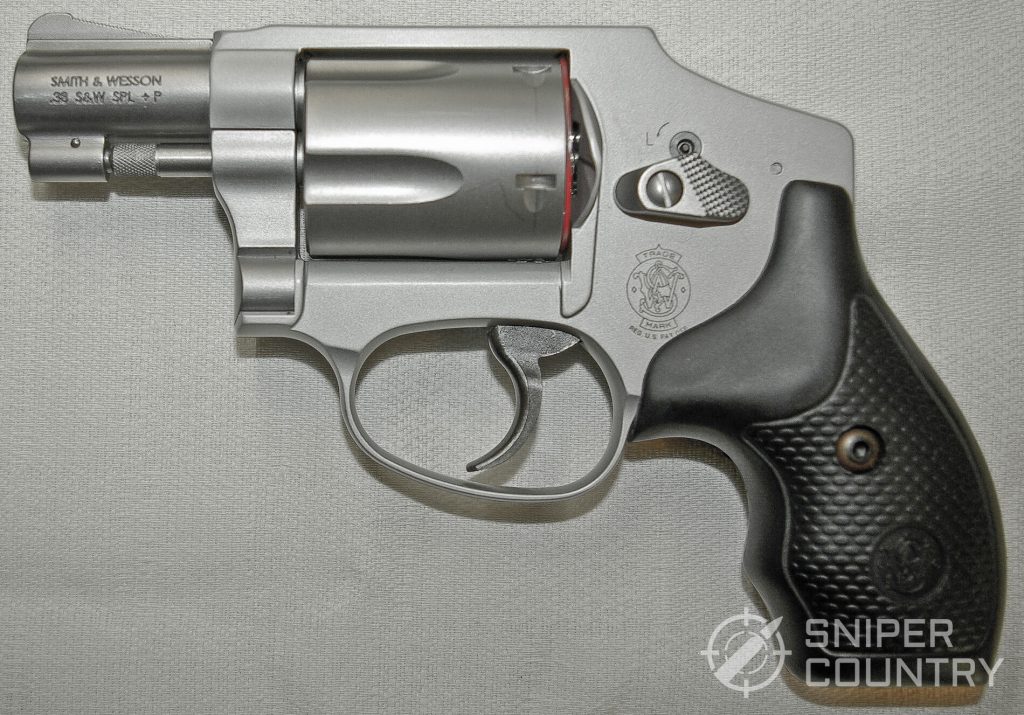
The 642, as referenced above, is the best-selling snubby S&W makes. I believe people like it because there is no hammer spur to possibly get snagged on something as you draw the gun. That is the only difference that I can see. My Model 638 is identical to the 642 in all regards except the shrouded hammer on mine is different than the enclosed hammer of the 642. My 638 has been likened to a humpback whale, what with the rounded hammer shroud prominently displayed at the rear of the frame but I take that sobriquet in stride in trade for the ability to cock the hammer manually if needed. They both weigh about 14 ounces, are 5-shot, .38 +P capable, and come standard with a rubber grip.
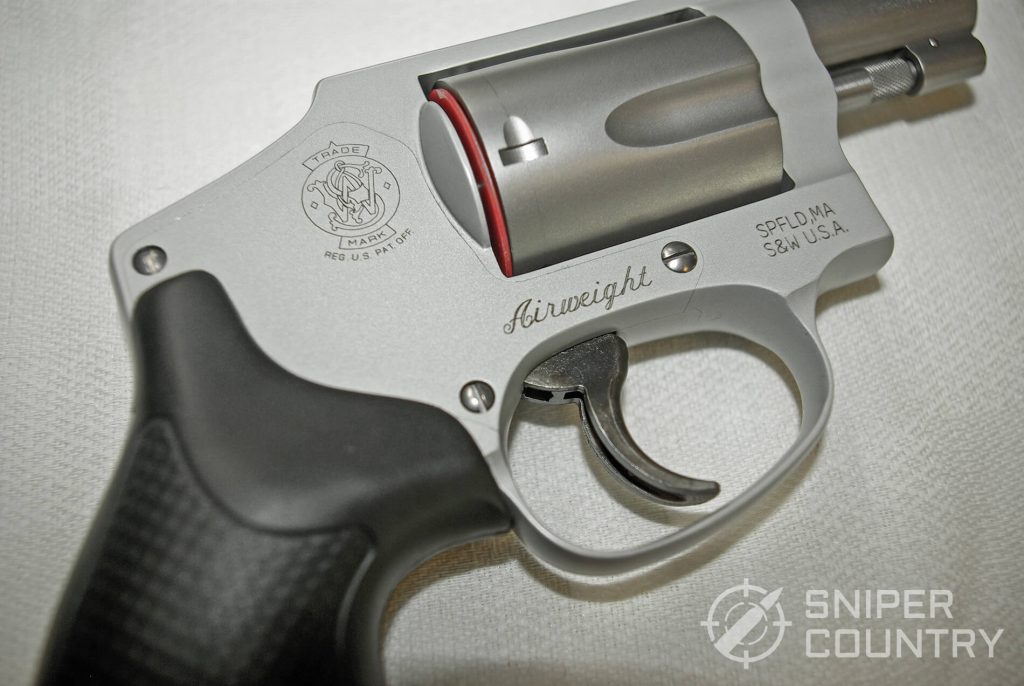
The rear sight is a square trough cut into the top strap, leading to the front sight blade. Shooting this gun well does take practice. I shoot target-to-mid-range .38 loads in mine for practice and carry Hornady Critical Defense ammo for other purposes. These guns all fit in a pocket holster easily. If you can hide the 1.4-inch-wide cylinder, you’re good to go. (A lot of guys complain about that “wide” cylinder but have no qualms about carrying a semiauto that’s at least that wide all over. Methinks they doth protest too much).
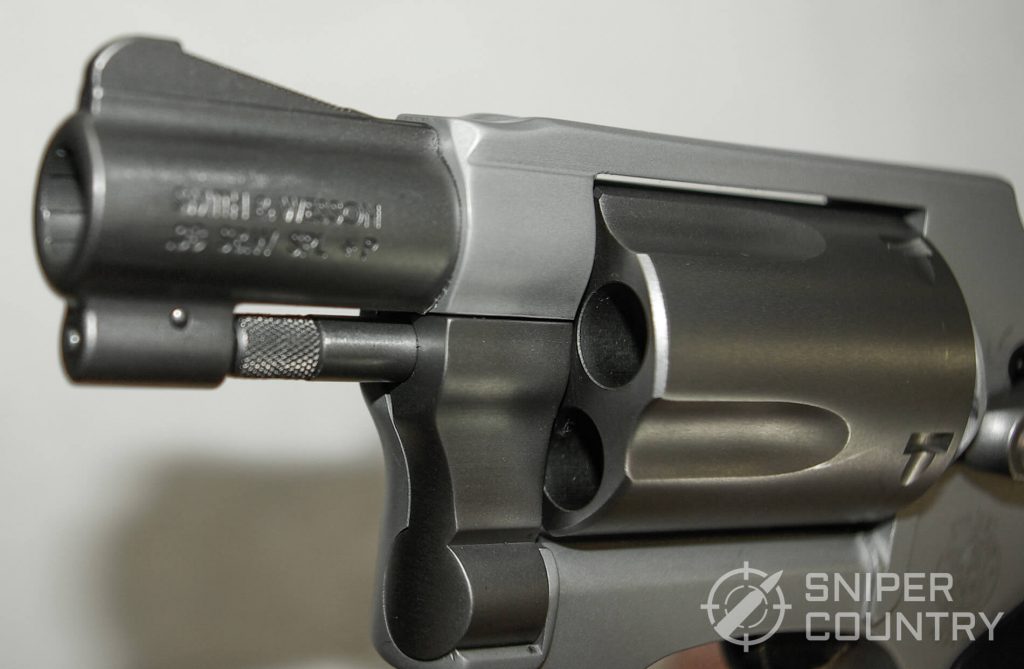
You can get the 642 from the factory with Crimson Trace laser and no internal lock for an MSRP of $724. If you want the no-laser version, that runs $469. Real-world prices tend to hover around $497 for the plain version and correspondingly more for the laser model. Of course, S&W sells Performance Center models with exotic wood grips, etc. that will set you back more. Now, for a gun-that-goes-bang-every-time, the simple, production models work very well. I speak from experience that these guns are tough and have no trouble at all with .38 Special +P self-defense ammo. They work well for their intended purpose and have for many decades.
M&P Bodyguard
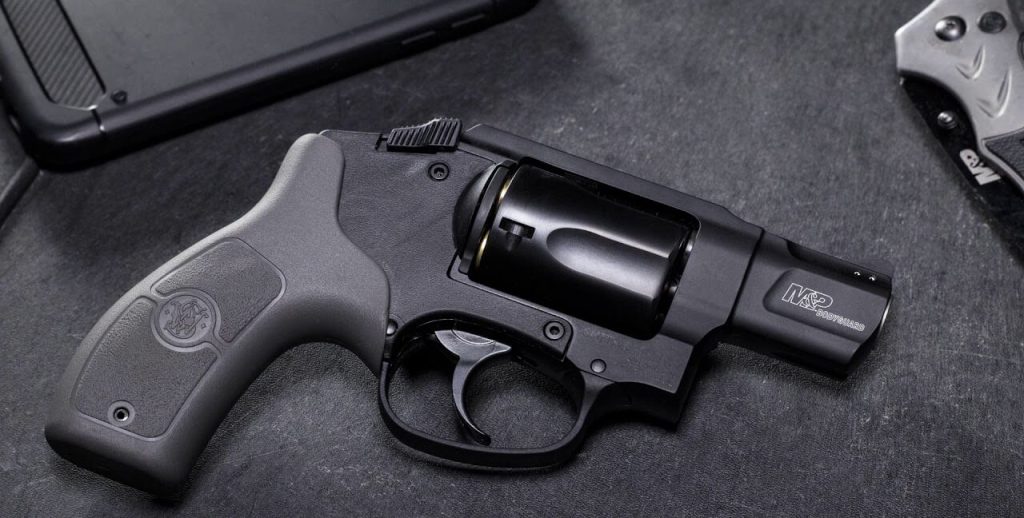
The S&W M&P Bodyguard .38 is a modern design that utilizes a polymer grip, aluminum alloy frame, and stainless steel barrel and cylinder. There are three factors about this gun that really grabbed me when I picked it up. First, the cylinder release. Being a lefty, the press-forward S&W cylinder release has always been on the wrong side of the gun for me. The Bodyguard solves that problem by making it truly ambidextrous. The press-forward latch has been moved to the top of the frame, just behind and under the rear sight. Simply slide the lever forward with either thumb and press the cylinder open. I’m not sure why it’s taken this long for this type of release to become popular, but I’m glad it has.
Secondly, the front sight is pinned so you can replace it with a luminous or night-type blade if desired. Third, what got me was the price. The full-blown MSRP on the non-laser-equipped gun is only $414, with the Crimson Trace-equipped model going for $539. A real-world price on the non-laser model tends to be around $375. The laser model is sold for around $475.
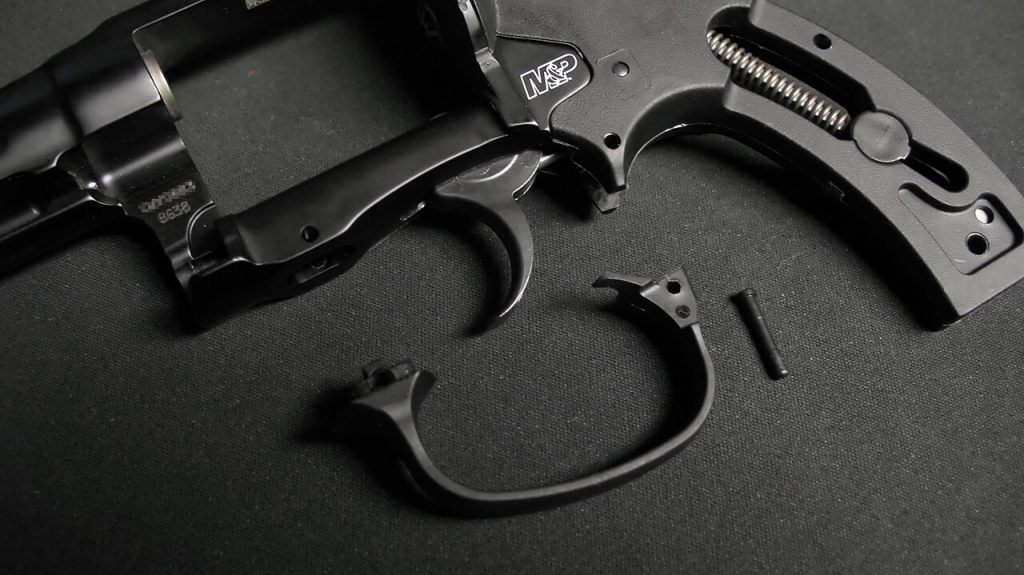
The Bodyguard is a 642-style, enclosed hammer model that weighs just over 14 ounces. It is a 5-shot .38 +P J-frame with its 1.87-inch barrel and abbreviated, curved grip.
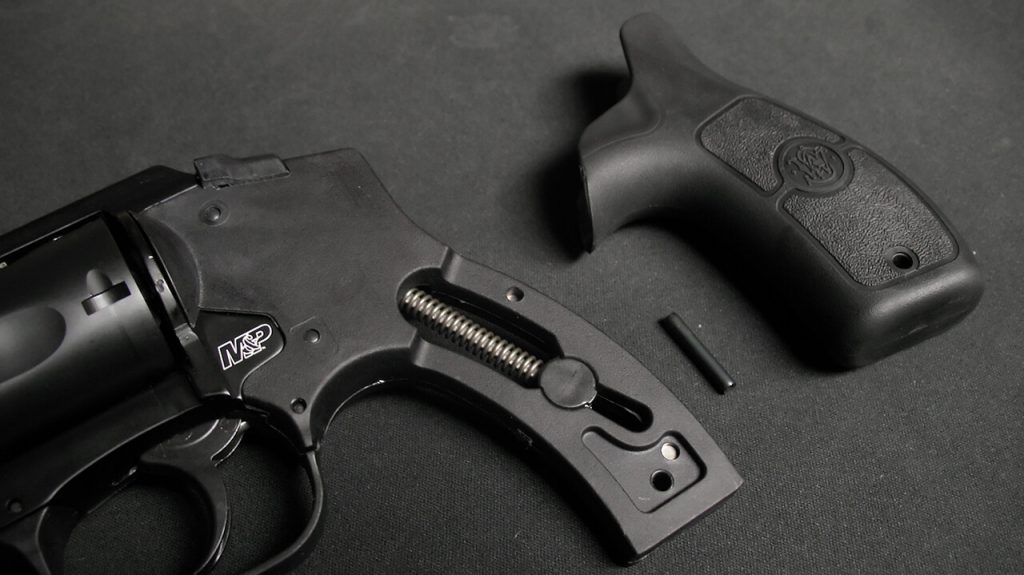
If you are looking for a snubby that has a cylinder that’s easier to open than the standard versions (I’m talking to all my fellow left-handers), then this is the gun for you.
A Bonus – The Model 640
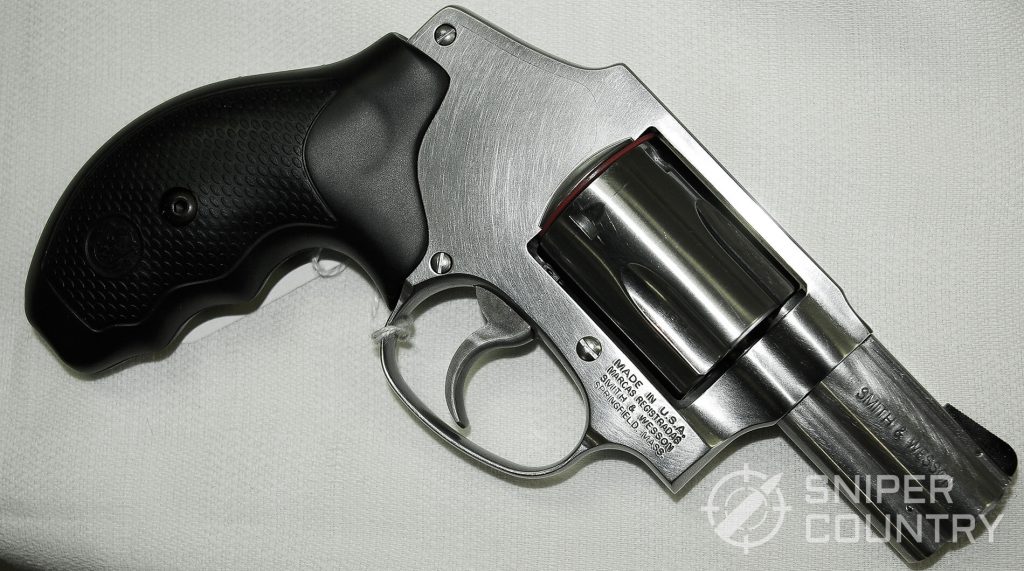
The Model 640 is not on my list above, but I thought I’d throw it in, anyway. Here is a 22-ounce, 5-shot, chunky little J-frame that fires the .357 Magnum (and, of course, the .38 Special) cartridges. The barrel is 2.125 inches. It is built along the lines of the 642 except it is all stainless steel (no aluminum alloy frame) and sports a black ramped front sight blade with a white insert.
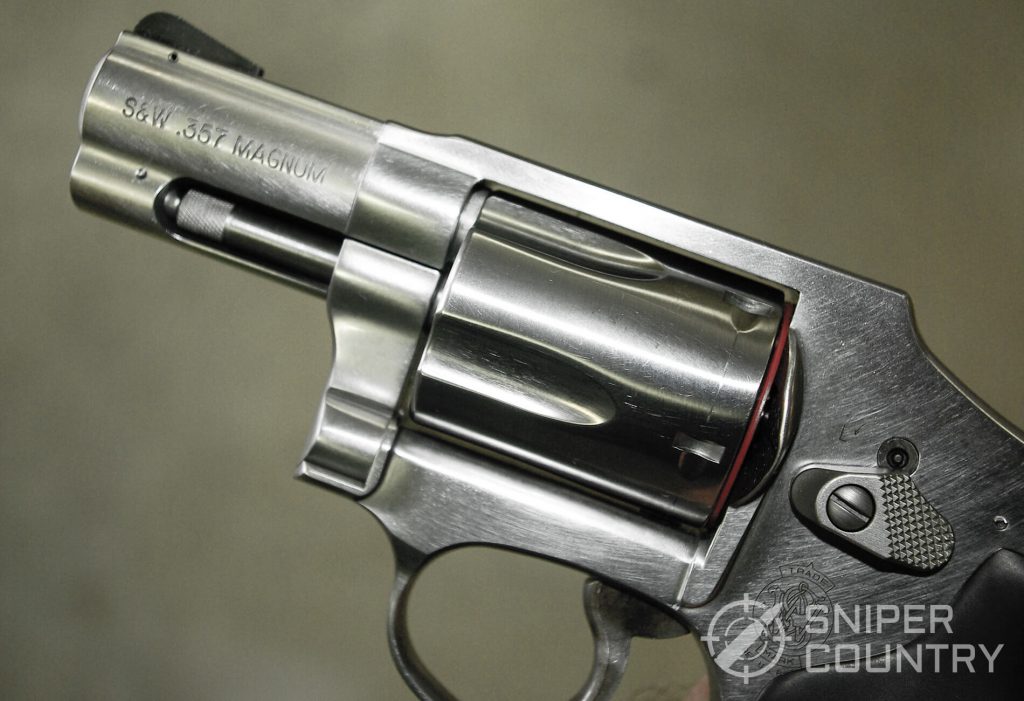
It lists for $755, but you should see them for around $650 locally. If you are looking for a dual-caliber hideout gun, this is the one for you. Just be aware that you will want to practice with .38 or lower-pressure .357 loads and reserve the heavy artillery for serious duty. Remember my analogy about getting whacked with a baseball bat from above – that enters in here. It may well be worth it, though, to have the extra velocity and energy of the .357, however marginal they may be, at your side in a time of need. Only you can make that call.
(Note: If the S&W 640 is priced a little above your price range, a decent, similar-type .357 snubby is the Taurus 605 in blue or stainless. They typically sell for a real-world price of around $350. You may want to check that out).
Taurus 856
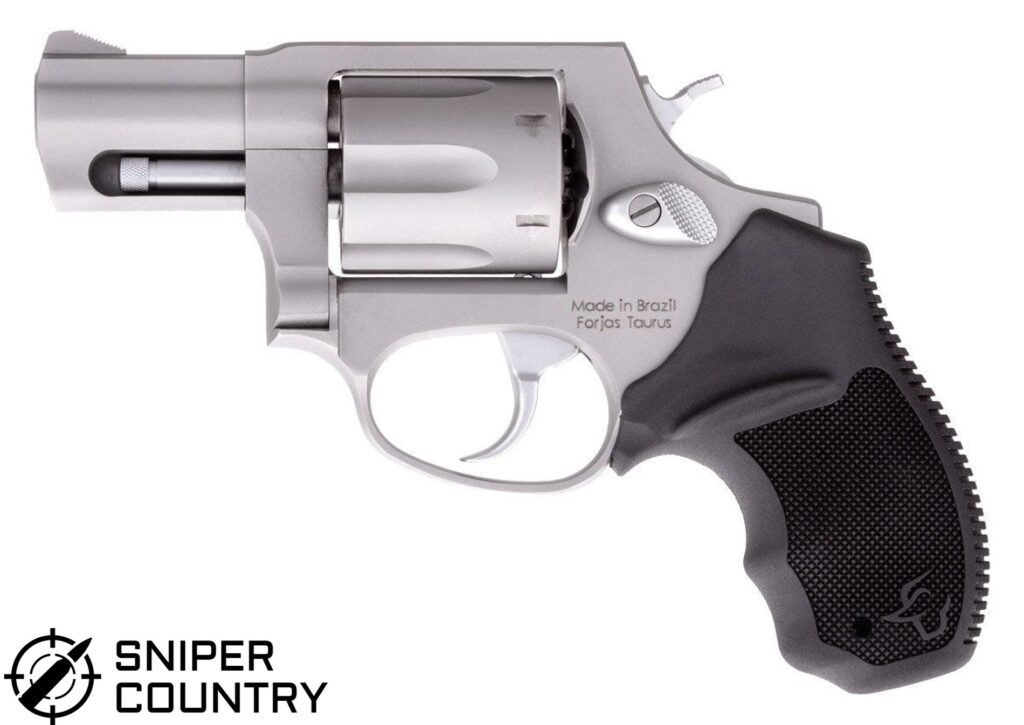
Speaking of Taurus, we end our little stroll down Snub Nose Lane with a look at one of their most popular models, the 85… or, more accurately, the 856. Taurus has had a winner for decades with their 5-shot model 85 — I own one and reviewed it. Mine is the Ultra-Lite version, but it came in a heavier format as well. With all the emphasis being placed on concealed carry guns nowadays, Taurus decided to up their game where their .38 snubby was concerned…they made it a 6-shooter. The new version is called, appropriately enough, the 856. Except for a very minor difference in weight and cylinder diameter (and I do mean minor), the guns are the same. (The 85’s cylinder diameter is 1.346 inches while the 856’s is 1.41 inches). They even come in steel and Ultralight versions.
This popular little snubby rides in many pockets or other holsters. Well-made, affordable, lifetime warranty – this gun has a lot to offer. Here either a 16- or 22-ounce 6-shot +P snubby (depending on steel or Ultra-Lite frame) with a 2-inch barrel. The 856 has a lot going for it. With an MSRP of $358, it’s not a bad buy but it becomes absolutely golden at a discount price of around $215-$295. At that price, you might think about one for each front pocket.
OK, one will do but…will it shoot? The short answer is, yes.
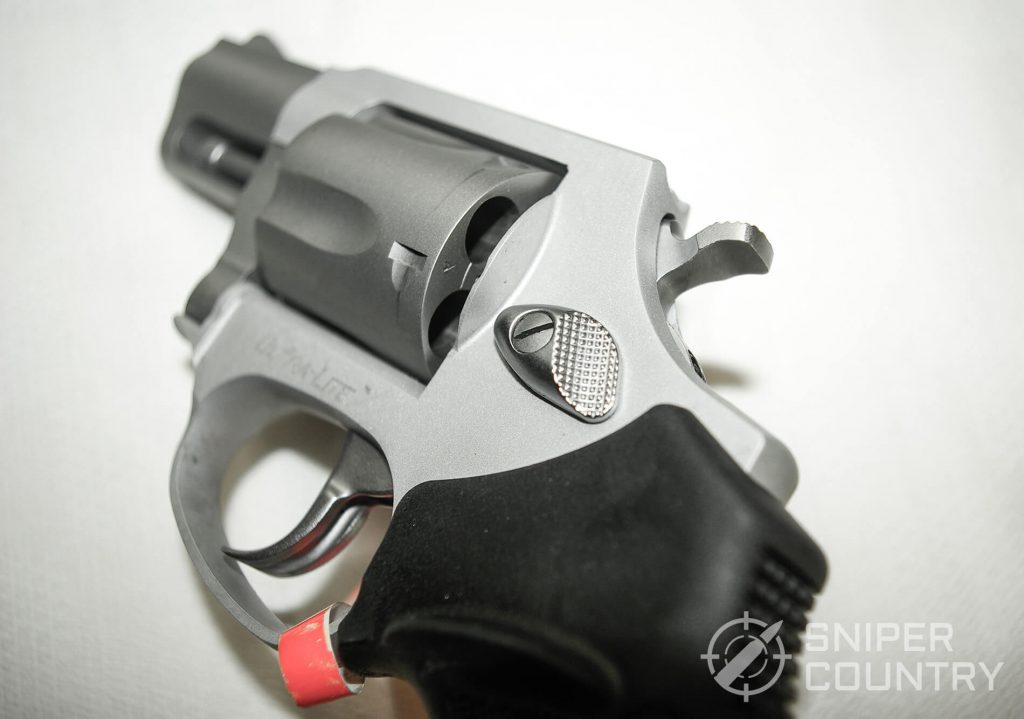
One main factor that makes some snubbies hard to hit anything with past a few yards is their weight (or lack of it, to be more precise). A gun that doesn’t even weigh one pound tends to be snappier when fired than one that weighs more – that’s simple physics. This gun, at the same weight as the above-mentioned S&W 640 .357, is easier to shoot well than a lighter gun. Another factor that aids in shooting this little gun is the grip module. It is a wrap-around, rubber number that really allows you to get a good grip on the gun and also helps with recoil. I put some pretty heavy-duty loads through my gun with little effect in terms of recoil. They also make enclosed-hammer guns similar to the S&W 642 (for example, their Model 650 in either .357 or .38 Special).
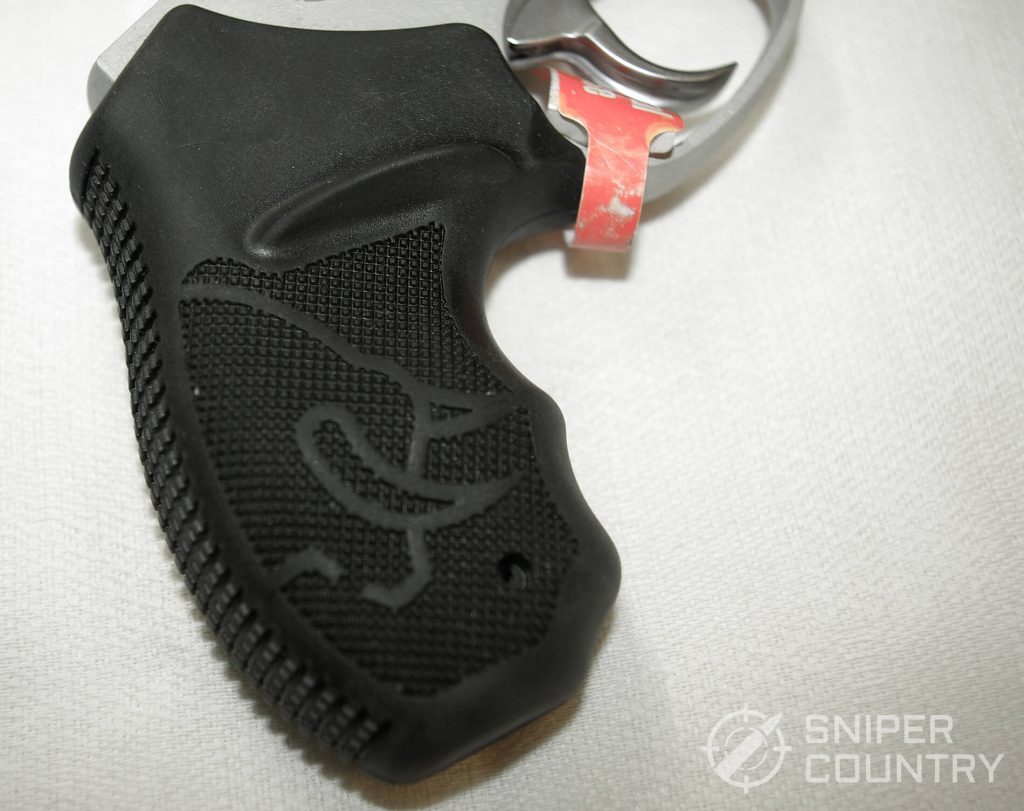
The Defender 856
I just described Taurus’s mainline snub-nosed seller, the 856, but I would be doing the reader a disservice if I didn’t at least mention their newer iteration of the snubby .38 – the Defender 856.
This gun features a three-inch barrel and a tritium front night sight with an orange (daylight) ring. In terms of grips, you can get the standard rubber or everything from fancy laminated wood to VZ grips. This gun fills the need that some have for an easily concealed revolver with a three-inch barrel that has sights that are very usable.
Depending on your needs, one of these revolvers might fill the bill.
In terms of variety, I counted no fewer than 27 856 and 856 Defender models on the Taurus website. MSRP prices ranged from $342 to $500 for variations that include blue or stainless finish, spurred or spurless hammer, different grip materials (including Viridian laser), and sights. There should be something here for just about anybody.
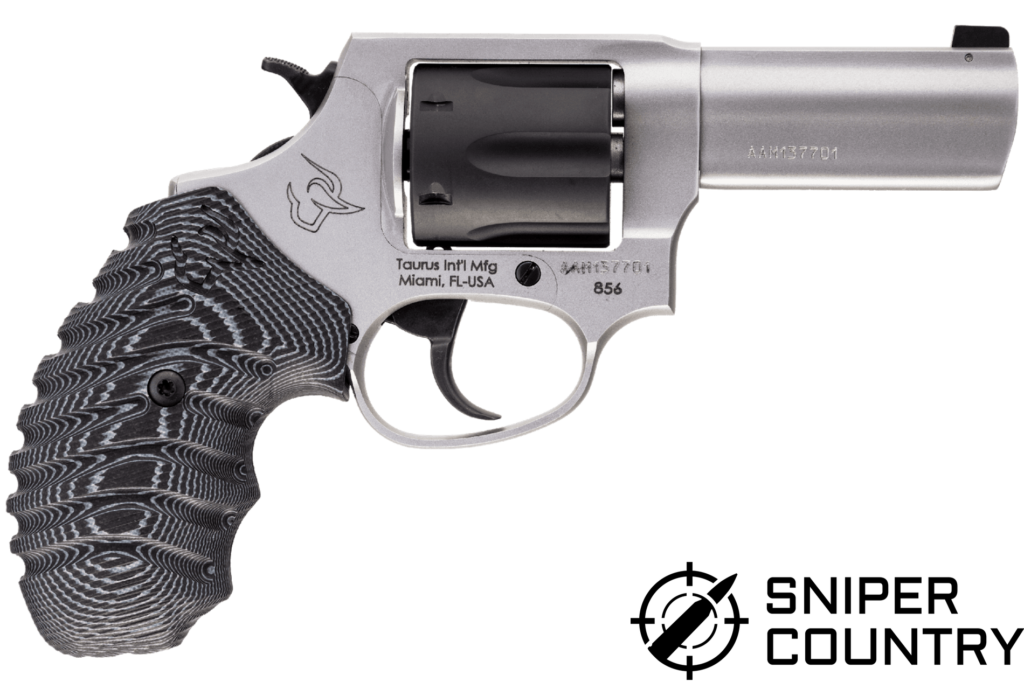
I have had good luck with Taurus revolvers, and really liked the Defender 856 I reviewed. You might want to at least take a look at one at your local gun shop. You might be pleasantly surprised at what you find.
Conclusions
So, what do we take away from all this? My first purpose in writing this article was to emphasize that revolvers aren’t dead. They are still viable carry guns. Evidently, some pretty heavy-hitters in the gun manufacturing industry think so, as well. Ruger, Smith and Wesson, Colt, Kimber, and Taurus (among others) have all introduced new short-barreled revolver designs in recent years. They would not do so if the guns did not sell.
The other reason I write this is to hopefully make the reader more aware of what’s out there in terms of short-barreled concealed carry revolvers. At no time in our history have there been more options for handgun shooters than now. (Semiautos included, as well). The next time you’re at your local gun shop, why not check out a couple of revolvers? With one of them in your pocket or on your belt, you have some great protection at hand. Another plus is you don’t have to pick up brass! I wish you good shooting – be safe!




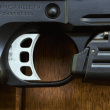
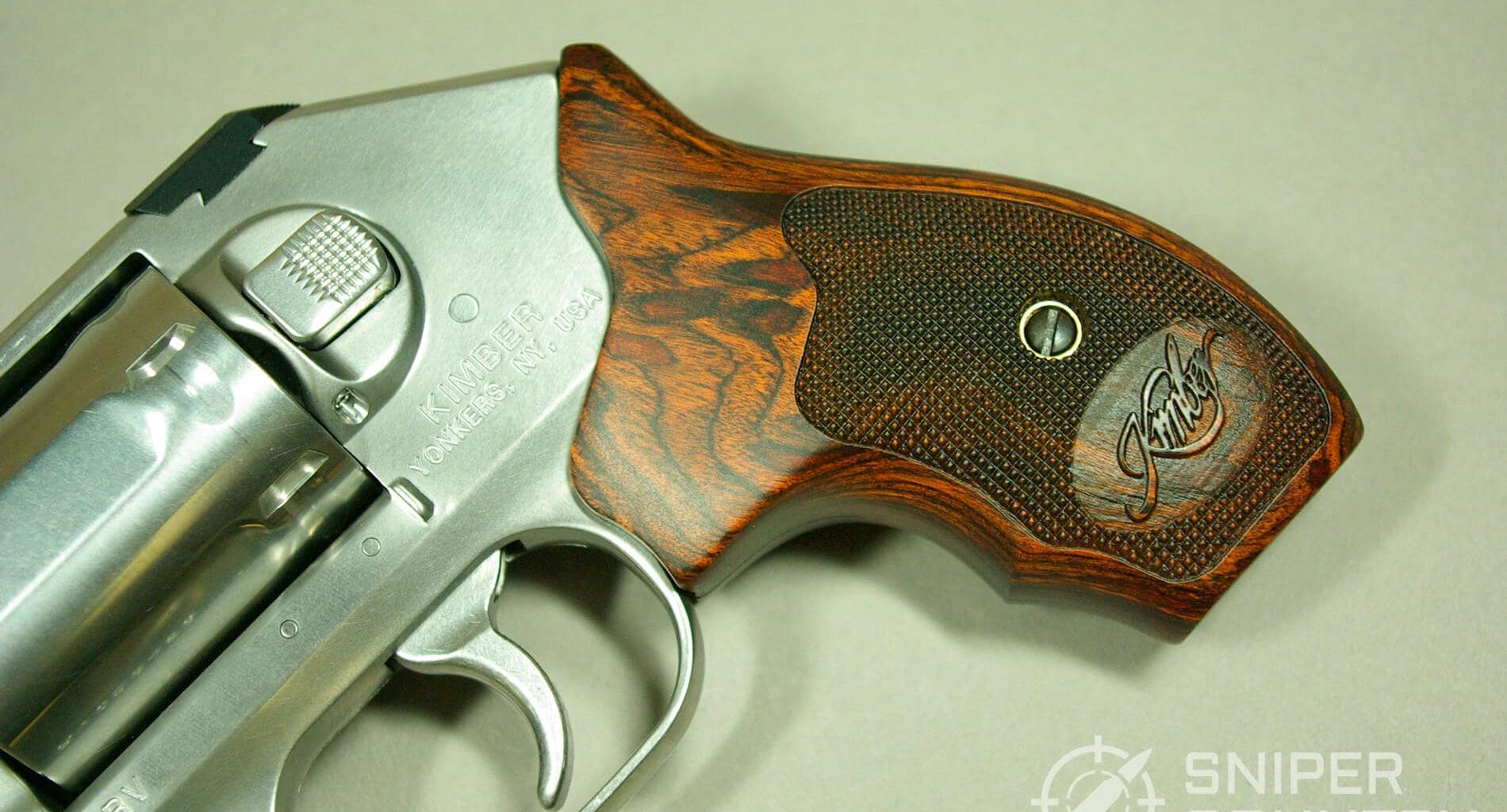
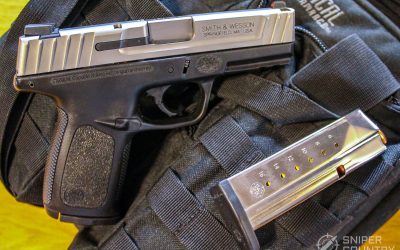

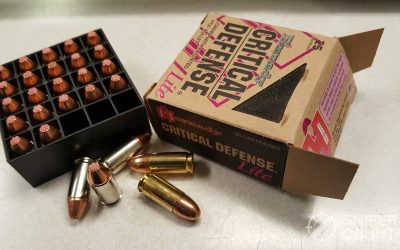
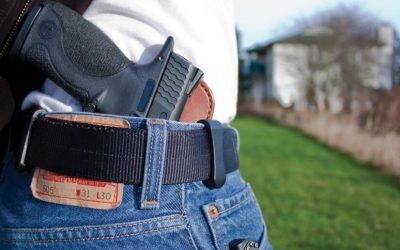
![9mm Glock Models [Ultimate Guide]](https://www.snipercountry.com/wp-content/uploads/2018/10/Glock-17-vs-Glock-19-vs-Glock-26-vs-Glock-41-vs-Glock-43-WM-400x250.jpg)
![Handgun Caliber Chart [2025 Ultimate Guide]](https://www.snipercountry.com/wp-content/uploads/2018/10/Handgun-Caliber-Comparison-400x250.jpg)
![Rifle Calibers [Ultimate Guide]](https://www.snipercountry.com/wp-content/uploads/2018/12/Header-1900-400x250.jpg)

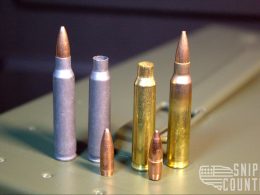
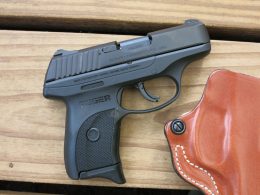
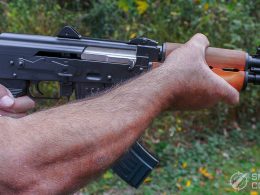
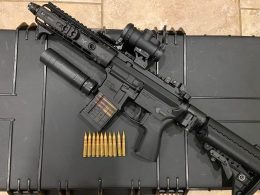

These are all great little revolvers but, if money isn’t a concern, check out the Chiapa Rhino.
The Chiappa is a great gun. I haven’t seen sales numbers for it, but I’ll bet it sells well. Being a bit different than the “normal” revolvers sure doesn’t hurt. I watch the Yankee Marshall at times on You Tube and this is one of his favorite revolvers. Firing out of the bottom of the barrel assembly would lower the bore axis and would seem to lower felt recoil, I’d think. I’ve not shot one but they are intriguing. Anyone else out there have experience with one?
Thanks for your comment!
I sold my Charter bulldog .44 special some years ago and wish Id kept it. Facing the hole in the barrel is a deterrent in itself. Recoil was fine throwing that big bullet.
Marvin, I totally agree with you – I wish I’d kept mine as well. It really was a decent shooter. At least you can get a new version of the classic Bulldog from Charter Arms…I just checked and the classic version goes for $452.20 MSRP. It looks just like the one I carried in 1978. I’m sure you could find it cheaper at your local dealer or online. Maybe we should think about picking one up, since we both miss it? Thanks for writing!
Another excellent review Mike. Any of the guns you reviewed would fill their intended role, it’s merely a question of how much you want to spend, and your preferences for extra features such as fiber optics front sights and other goodies.
Personally, I prefer DA/SA to DAO. Although I learned to fire my old S&W model 36 DA, I like the option of SA being available, so like you, I’d lean towards the 638 if I was going to carry it in a pocket.
Keep up the good work. I look forward to your reviews.
Bemused, appreciate your comments, as usual. Thanks for writing again!
Some people think that I have strong opinions about firearms. I do and they are based on my real world experiences with the guns I think highly of. That being said, IMHO the absolute BEST every day carry snub nose revolver is the Ruger LCR/LCRx in .38 spl loaded with standard pressure Underwood 100gr. Xtreme Defender ammo that uses a barrier blind, fluted, solid copper projectile at an advertised velocity of 1200 FPS (of course YMMV). I carry an LCR in a Desantis N3 nylon pocket holster and it disappears into the right front pocket of whatever pants (not shorts, pants) I wear. Like Mike, I am well beyond the age of wearing tight fitting trousers so that is no longer an issue. No muss, no fuss, put in my pocket and I’m ready to go. The recoil is easy making repeat shots a non-issue. Ruger engineers made the linkage on the LCR a thing of beauty, i.e. the BEST double action pull available. I used to carry a S&W 642 Airweight until I tried the LCR. The 642 trigger stacks and stacks and stacks and if your sights are still on target when it releases you are a better shooter than I. Do I like it better than my M1911 Commander in .45ACP? No. But I carry the LCR 95% of the time because we all know the first rule of gunfighting is to have a gun.
Kaniksu, good choice. Ruger triggers are, usually, very good and the LCR is one sweet carry revolver. Good choice in ammo, too. Seems like you have it figured out. Thanks for writing again!
Article needs updated, it is dated. We no longer have a favorable political climate or much of a selection of anything. A snub nose .357 is one of several guns I use for different reasons. Firing a snub nose out of a jacket pocket is a real asset, just remember where your ‘other’ hand is. Also the hole in the pocket has to be seen to be appreciated; that jacket is literally shot. I have also read to never carry handloads for defensive purposes against humans (so called); a bad AG will run you over the coals. Best is a factory load in a good defensive load, for legal purposes. Maybe it is me, but .357’s out of a Ruger LCR are not bad (however one of my nieces agrees that is also not painful). Really good to live in a country that, so far, we can own just about whatever we want to. I am very afraid that could change under the new regime.
Just Me, yeah – I caught that about the political climate and am having it removed in my re-edit – things are different, for sure! Hopefully things will settle down as the initial admin change winds blow over. I also agree about not carrying handloads for defense – it’s hard to gig someone for carrying the same type of ammo that the police use. Thanks for writing again!
Mike, I have a fair number of the revolvers you mention in this article. These include the Charter Arms Bulldog in stainless with a 2.5” barrel, the Ruger LCRx and SP-101, S&W 642, and the Taurus 856 Defender. I also have the Taurus 605 .357 Magnum, Charter Arms Mag Pug with a 3” barrel in .357 Magnum and .41 Magnum, and the Bulldog in .45 Colt. Of all of them, the Ruger LCRx has the smoothest trigger, while the Charter Arms Mag Pug in .41 Magnum is the most powerful (but the recoil is beyond brutal). But all of them do the job and are easy to conceal carry. Of course the common problem these days is not only product availability, which has driven prices toward MSRP, but also ammunition shortages. The law of supply and demand is immutable. If I choose to carry a small wheel gun for concealed carry, I normally choose the Charter Arms Bulldog in .45 Colt. It strikes a nice balance between power and controllability.
John, you have some big boomers in some small packages! I’m impressed with your ability to handle recoil. Even the .45 Colt is a kicker in a small gun. I’d forgotten that Charter made guns in .41 and .45 Colt. You’re right about the ammo shortage – I’m happy to be a reloader now. Thanks for writing!
I prefer the 3″ S&W 66 or 3″ Kimber K6S. The S&W has the advantage of the longer ejector rod, the Kimber, a slightly narrower cylinder. I’ll take the longer ejector rod for more reliable ejection of spent casings every time. The 3″ barrel is easy to conceal and is easier to shoot/control than the shorter offerings discussed. Plus, you get better performance from your defensive rounds. Capacity can be a concern, depending on the situation. Three bad guys against a J-frame? it’s doable, especially if they’re cowards, but not recommended.
Tom, good points. I agree with all you said. I’m with you – I like 3-inchers as well. Thanks for writing!
You kind of lost me there when you went from a Kimber to a Rossi all in the same paragraph with out any kind of subject transition.
Alex, yeah, I get it – not sure what I was thinking. I usually do better than that. Thanks for catching that!
I pack a full size 1911 in .45 acp loaded with 200 grain XTP handloads most of the time but during hunting season I carry a stainless Ruger Blackhawk 44 mag with a 5.5 inch barrel as I live in grizzley country. I carry the Blackhawk everywhere with me for 5 months out of the year here in Montana . Ya its overkill for personal defence against humans but if I were to have a run in with the big bear I prefer that 44 mag.
Rob, sounds like you have it covered – you’re good in any situation. Thanks for writing!